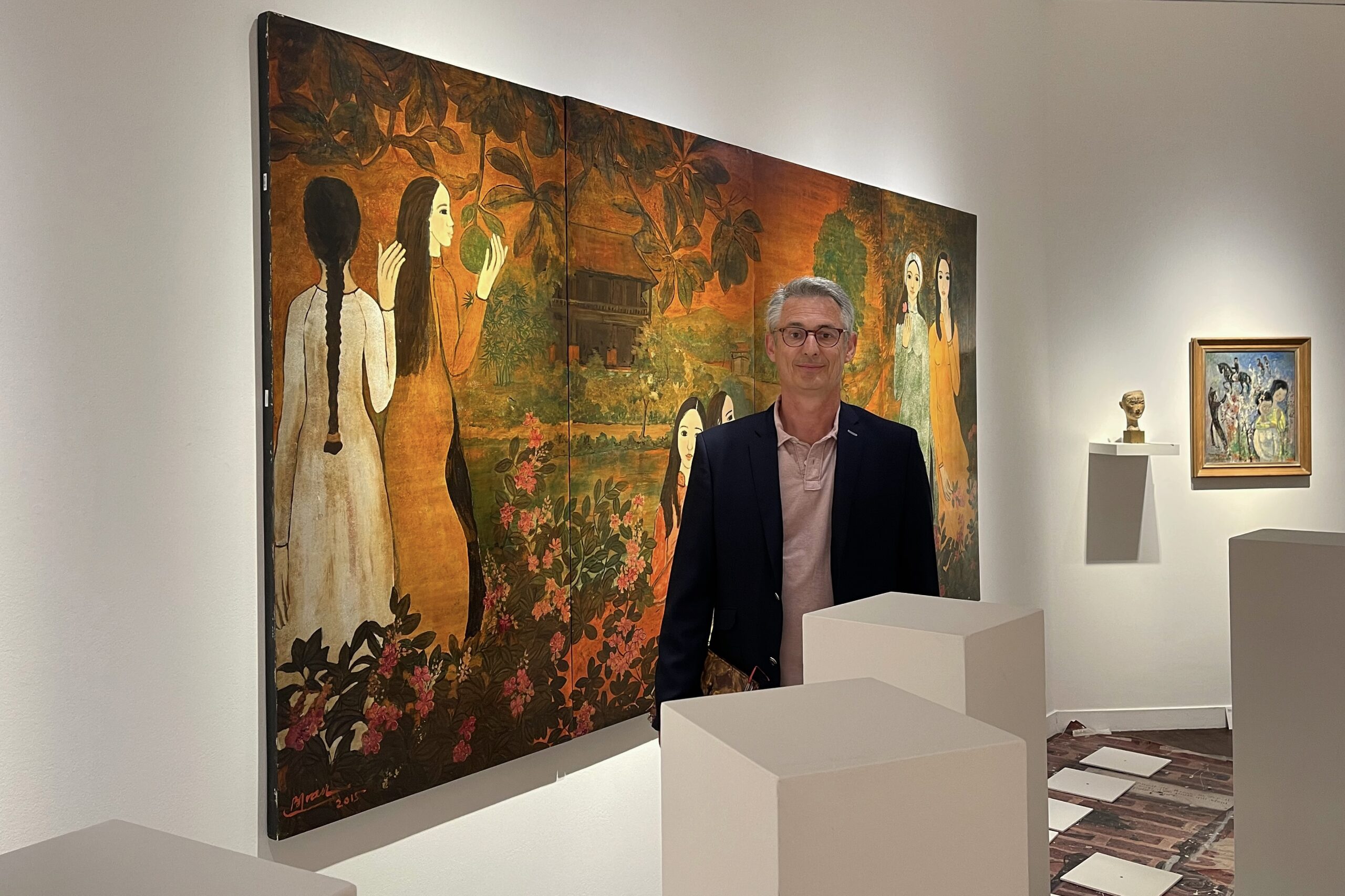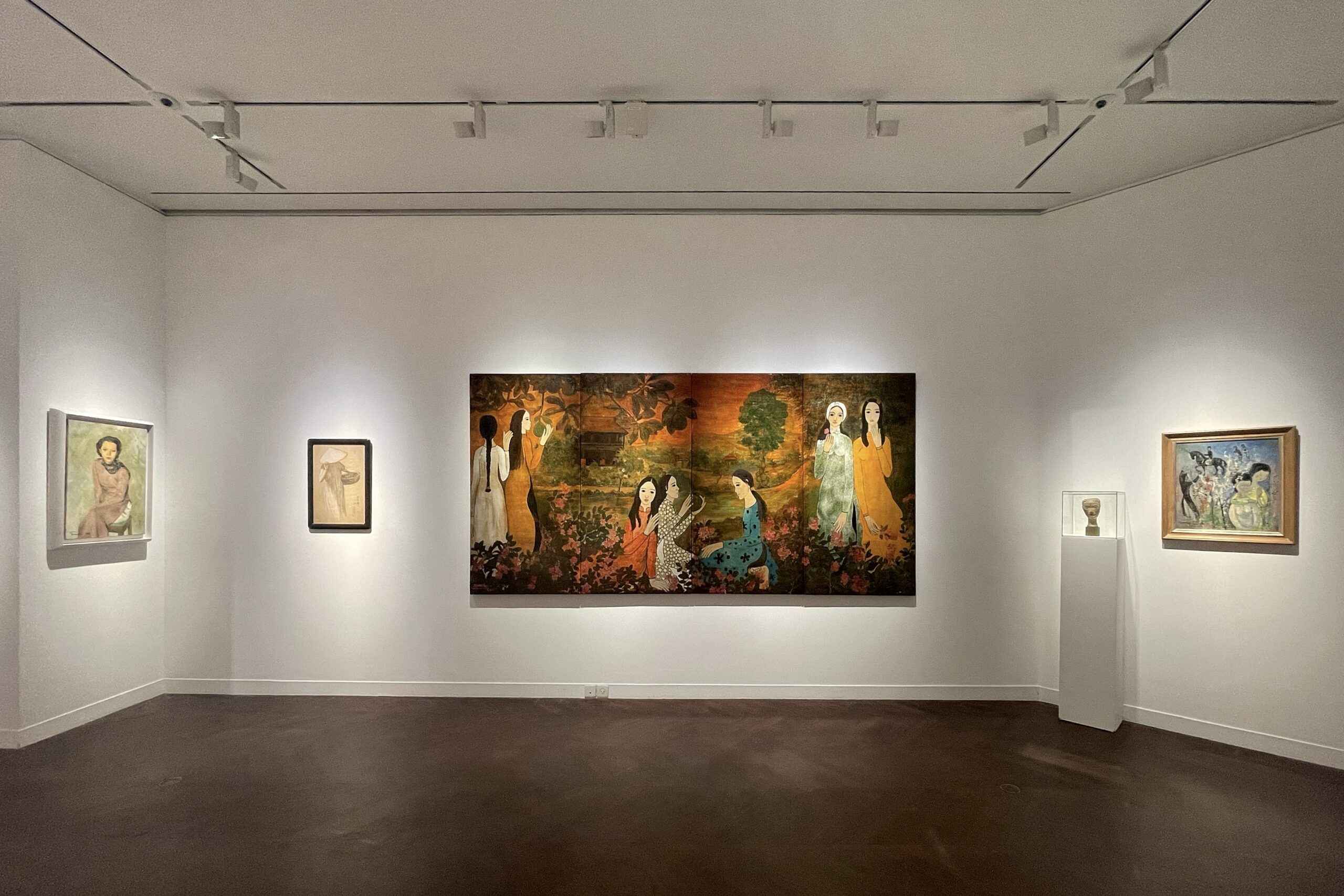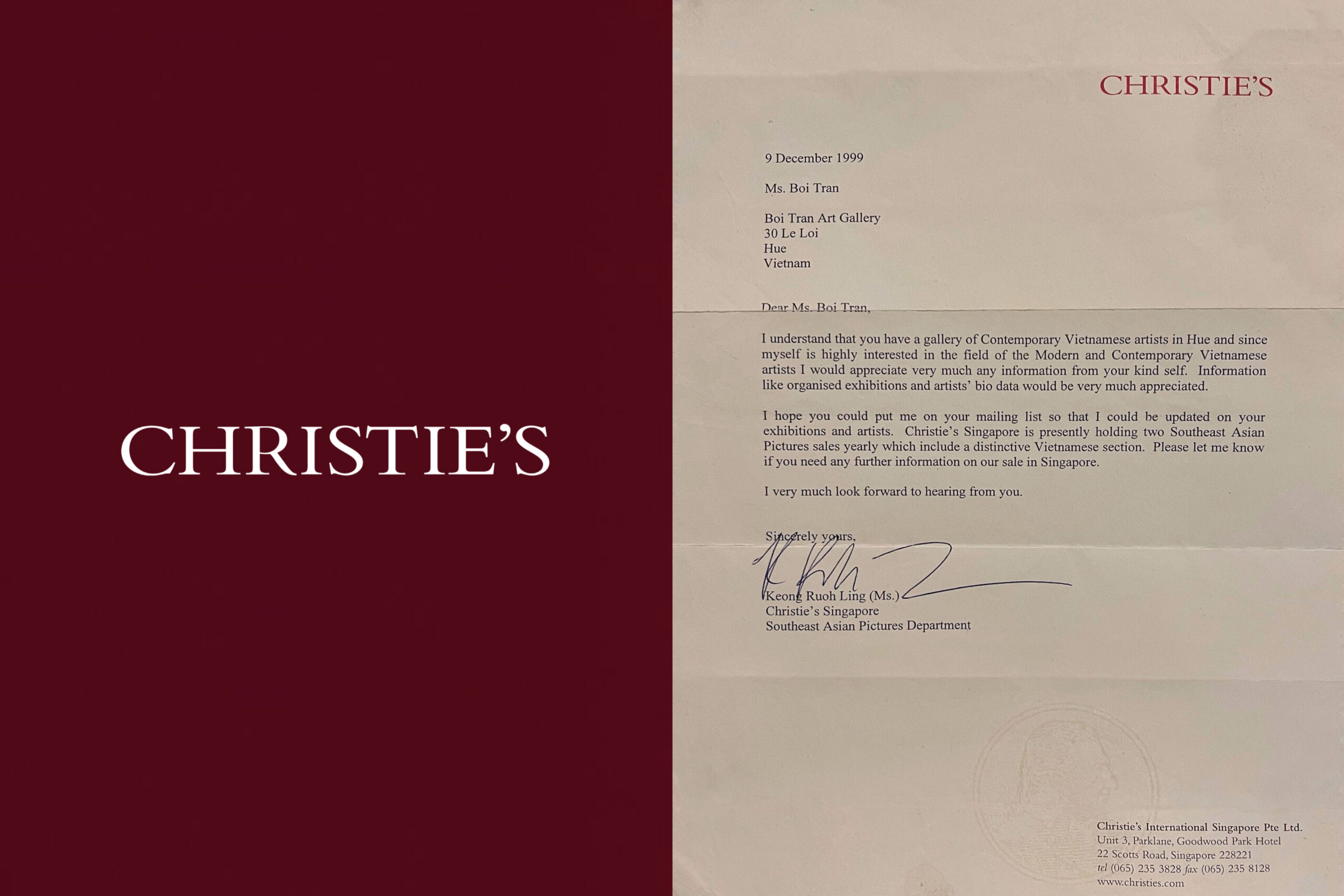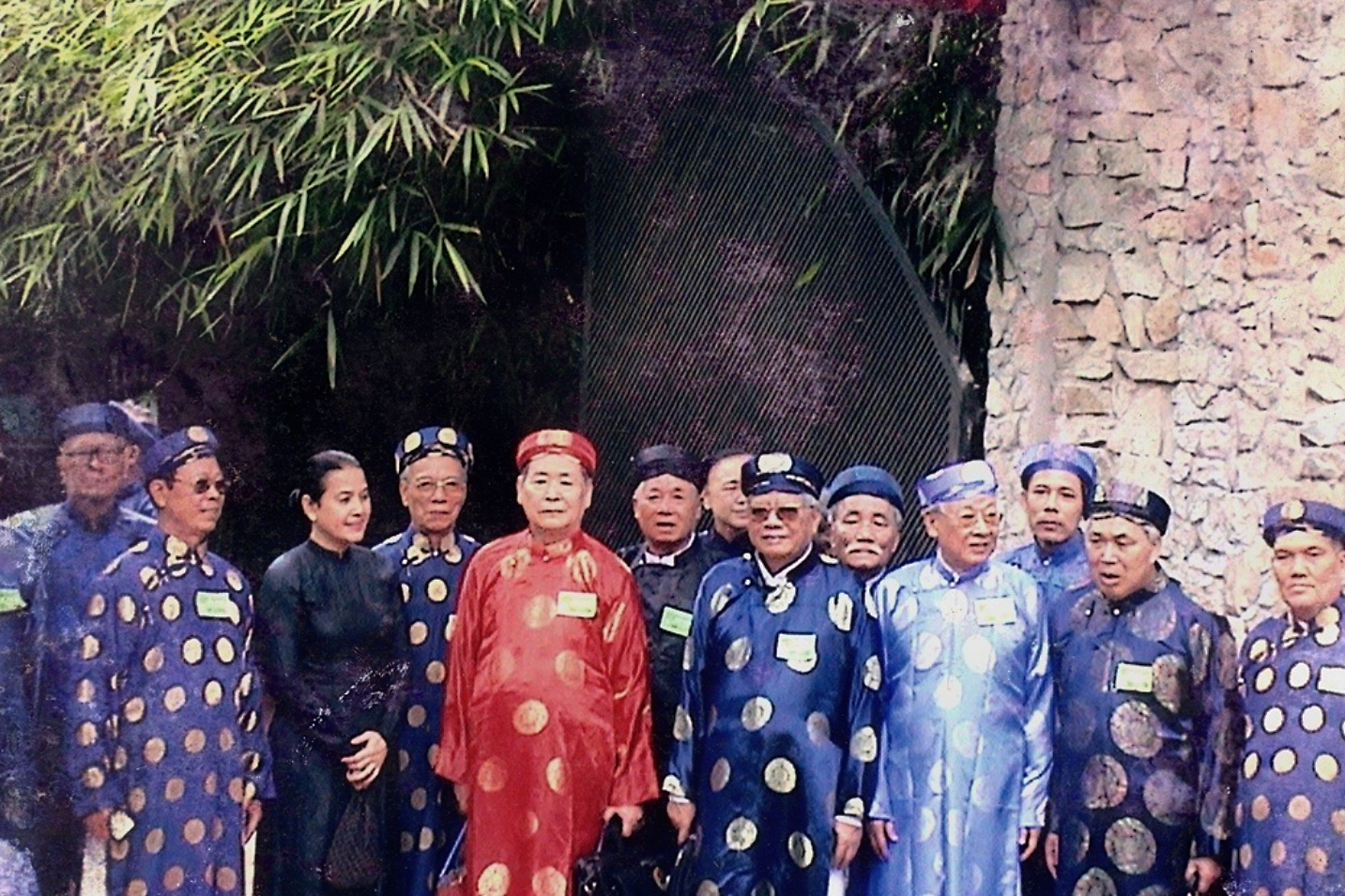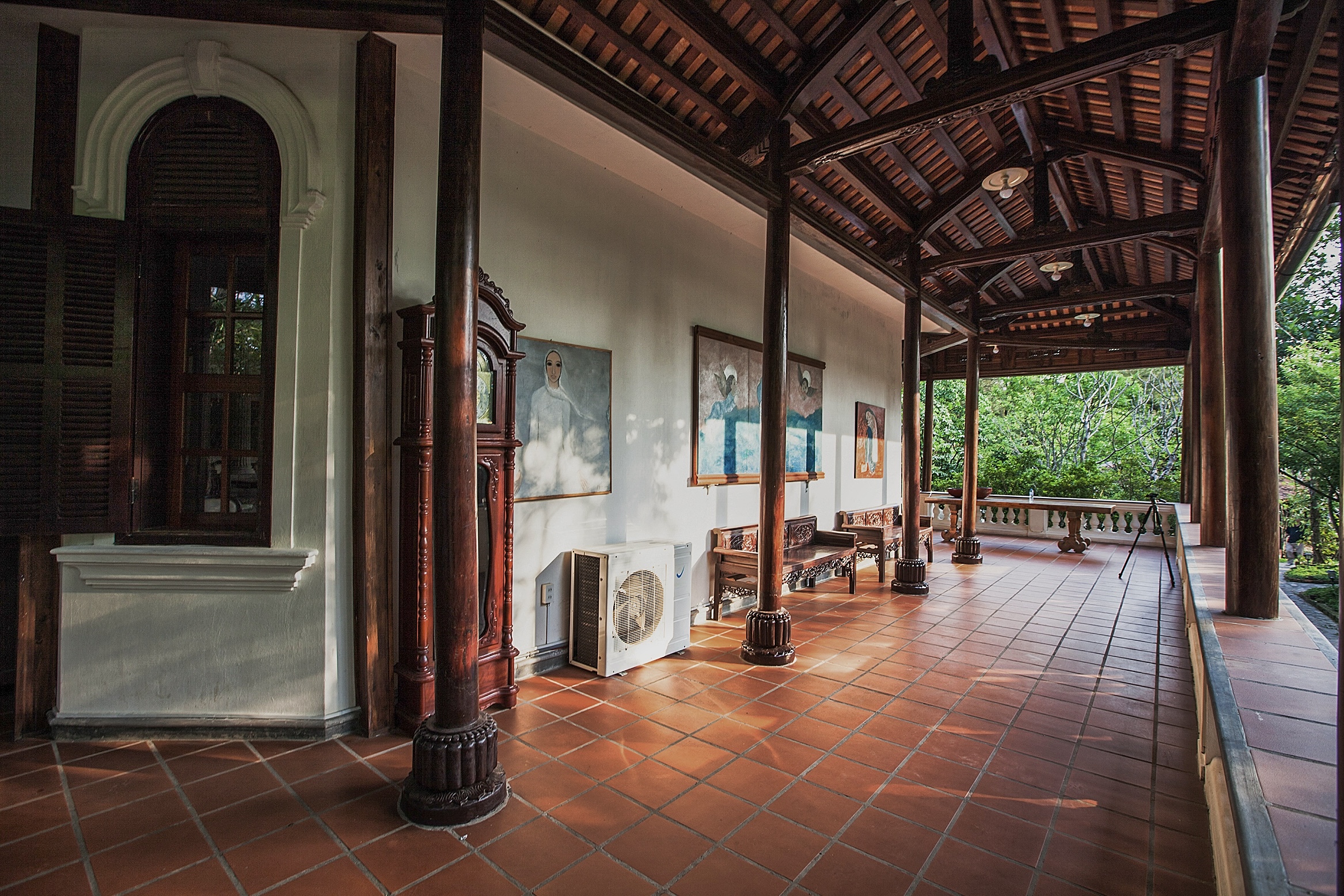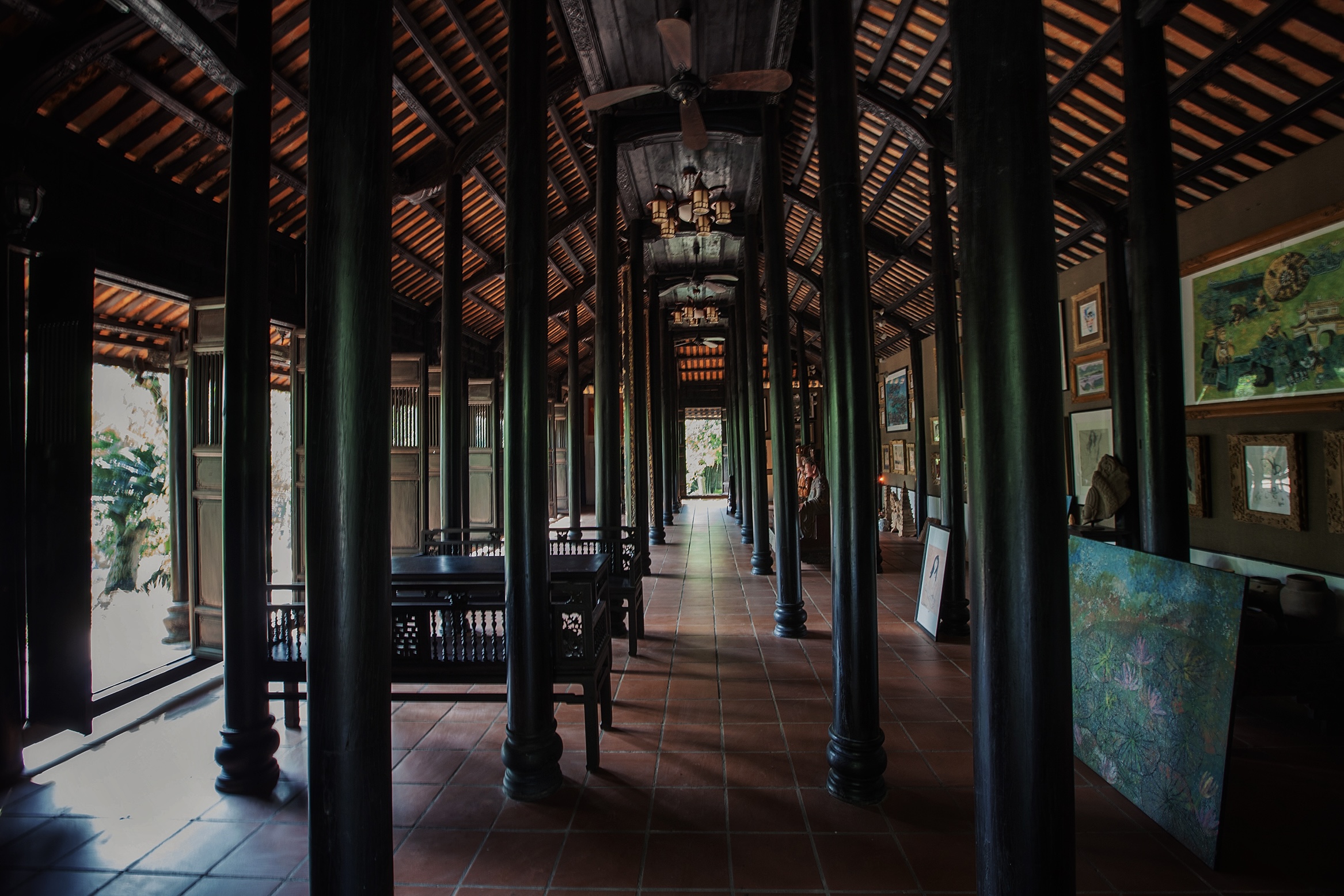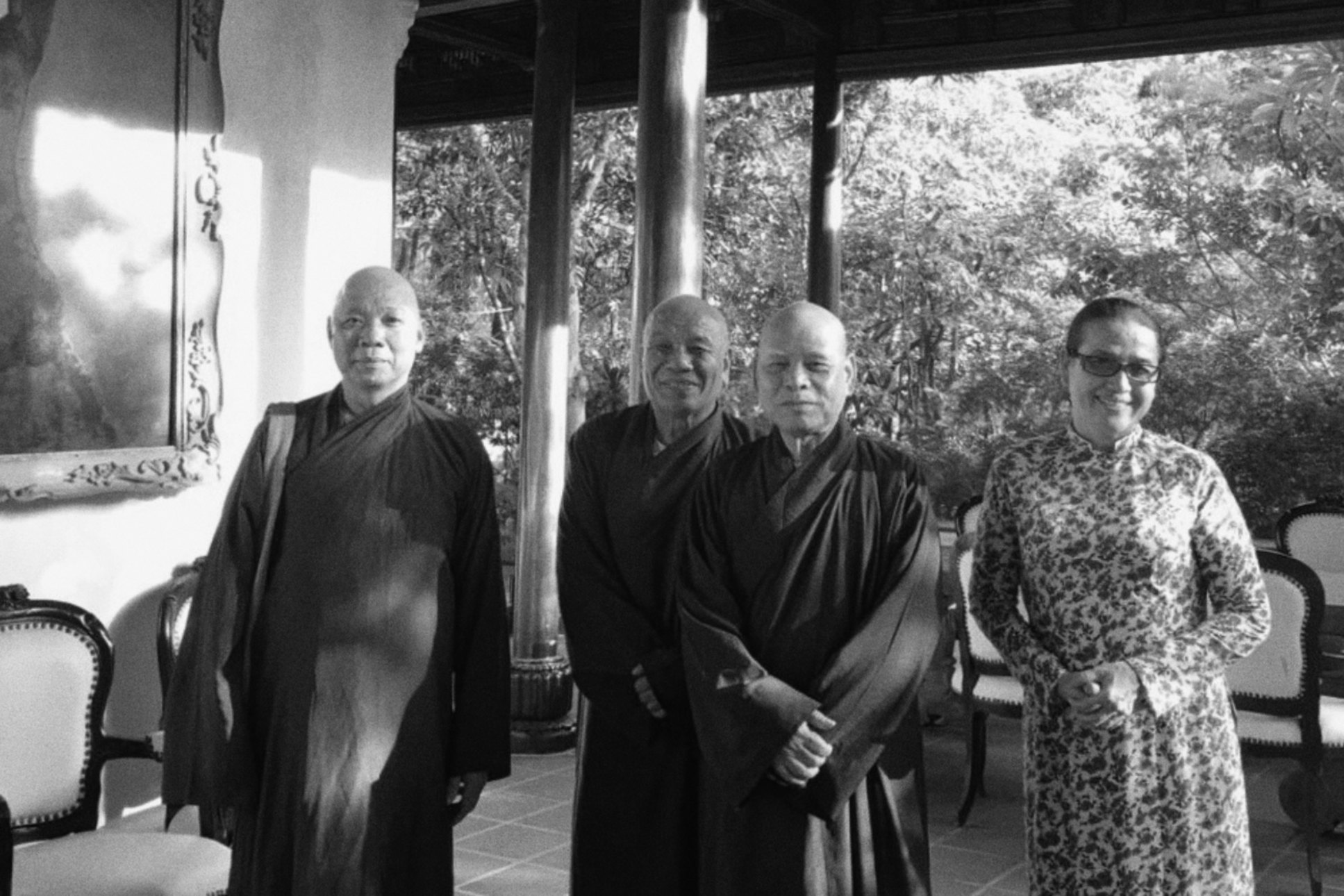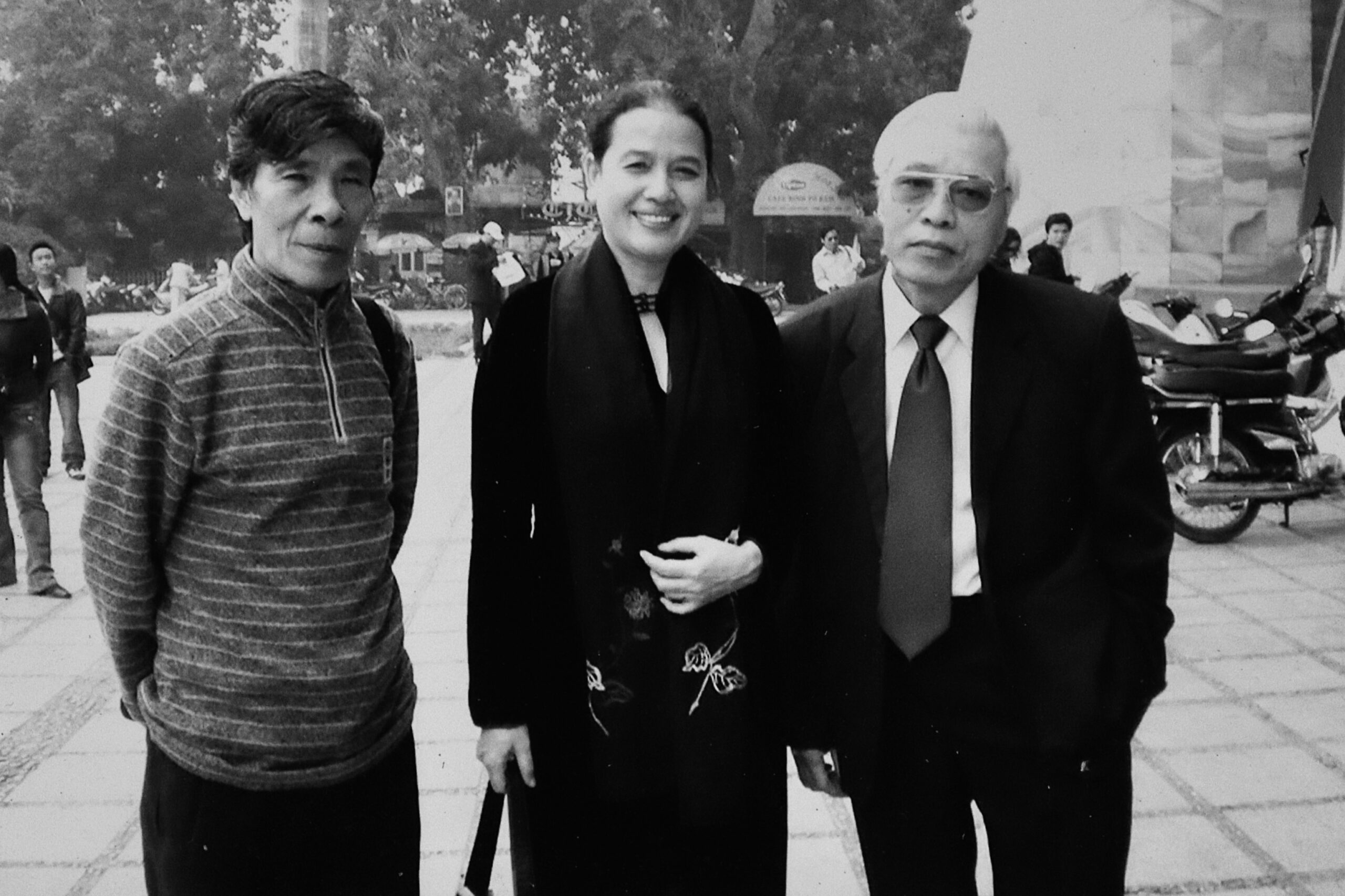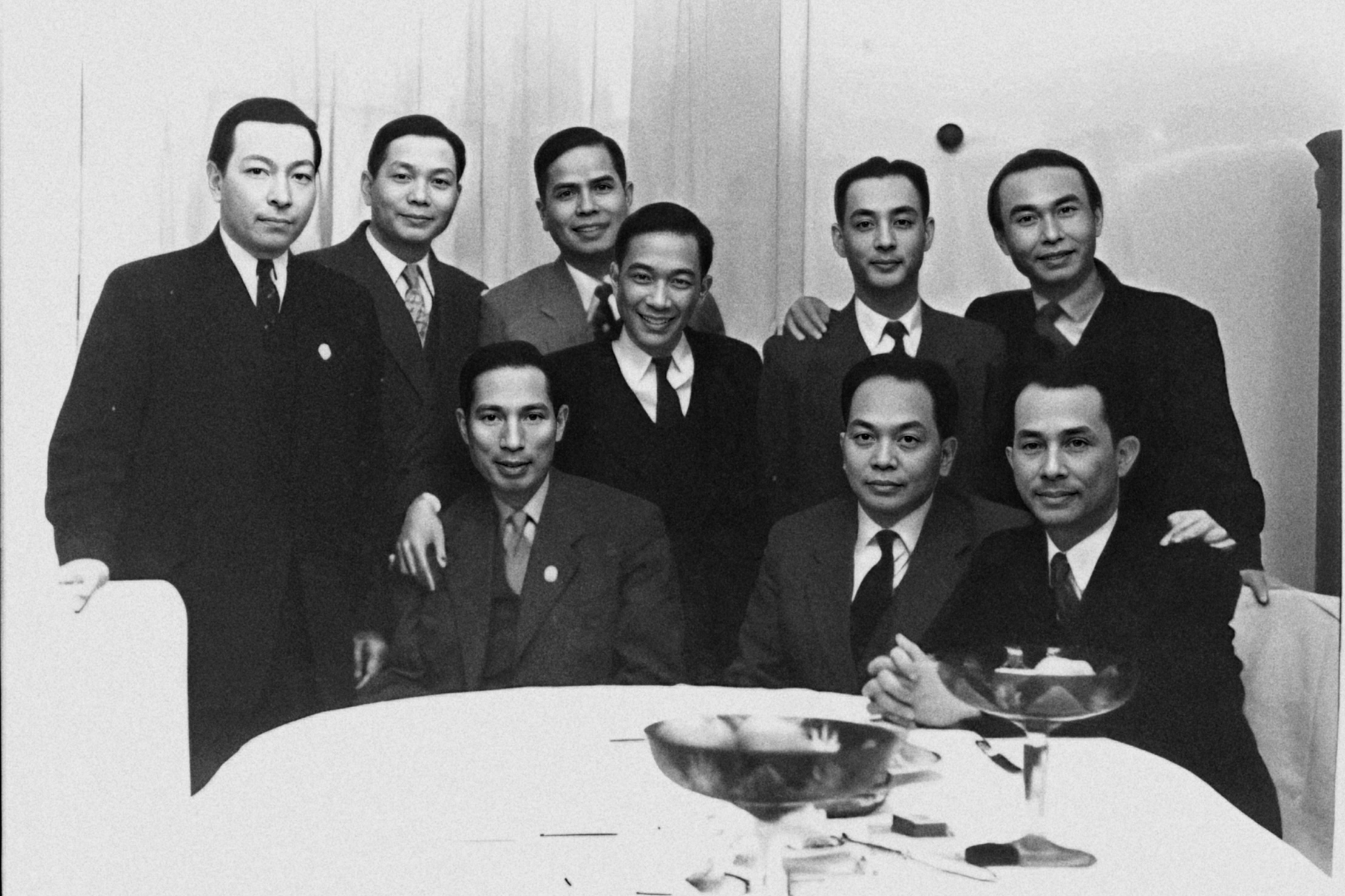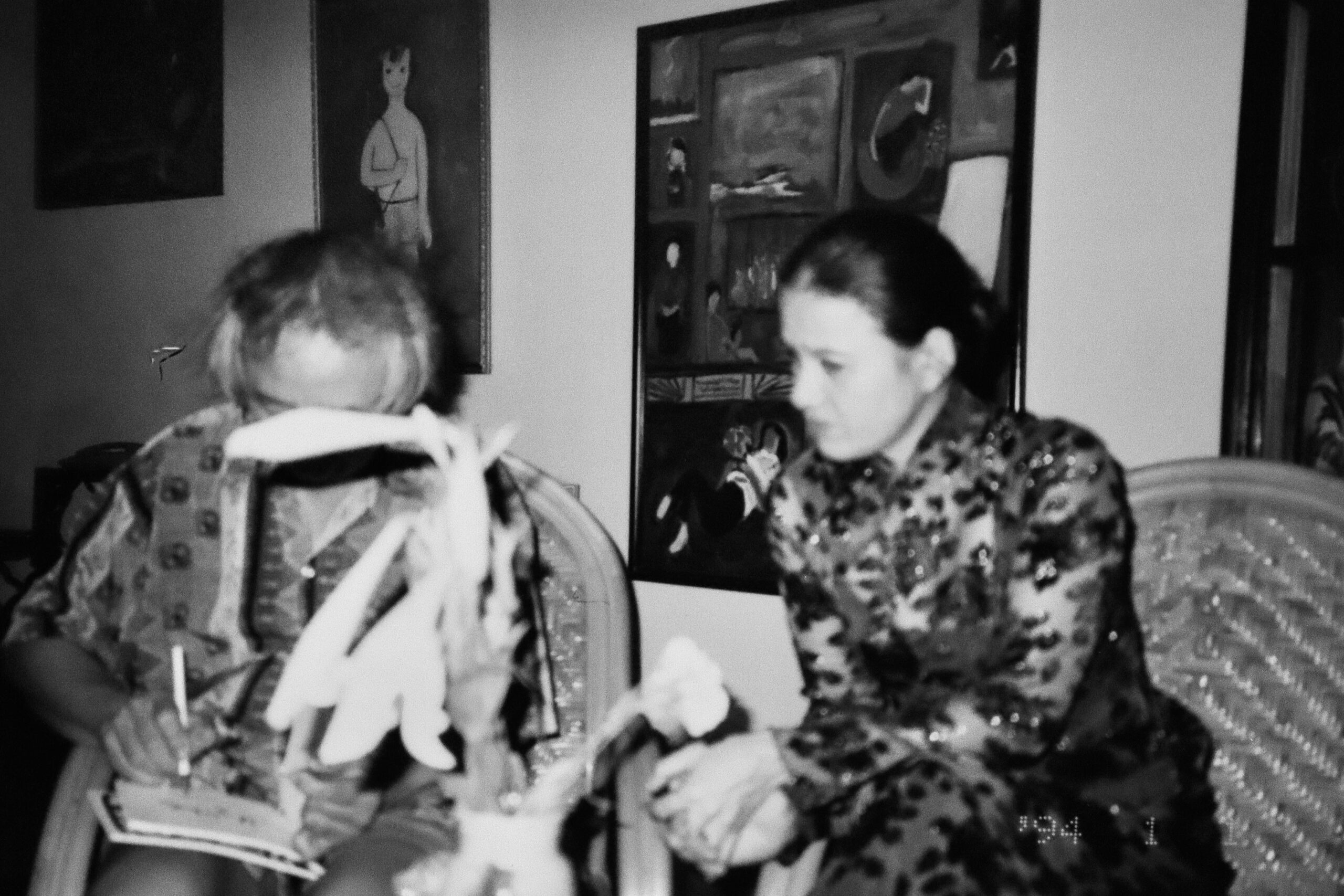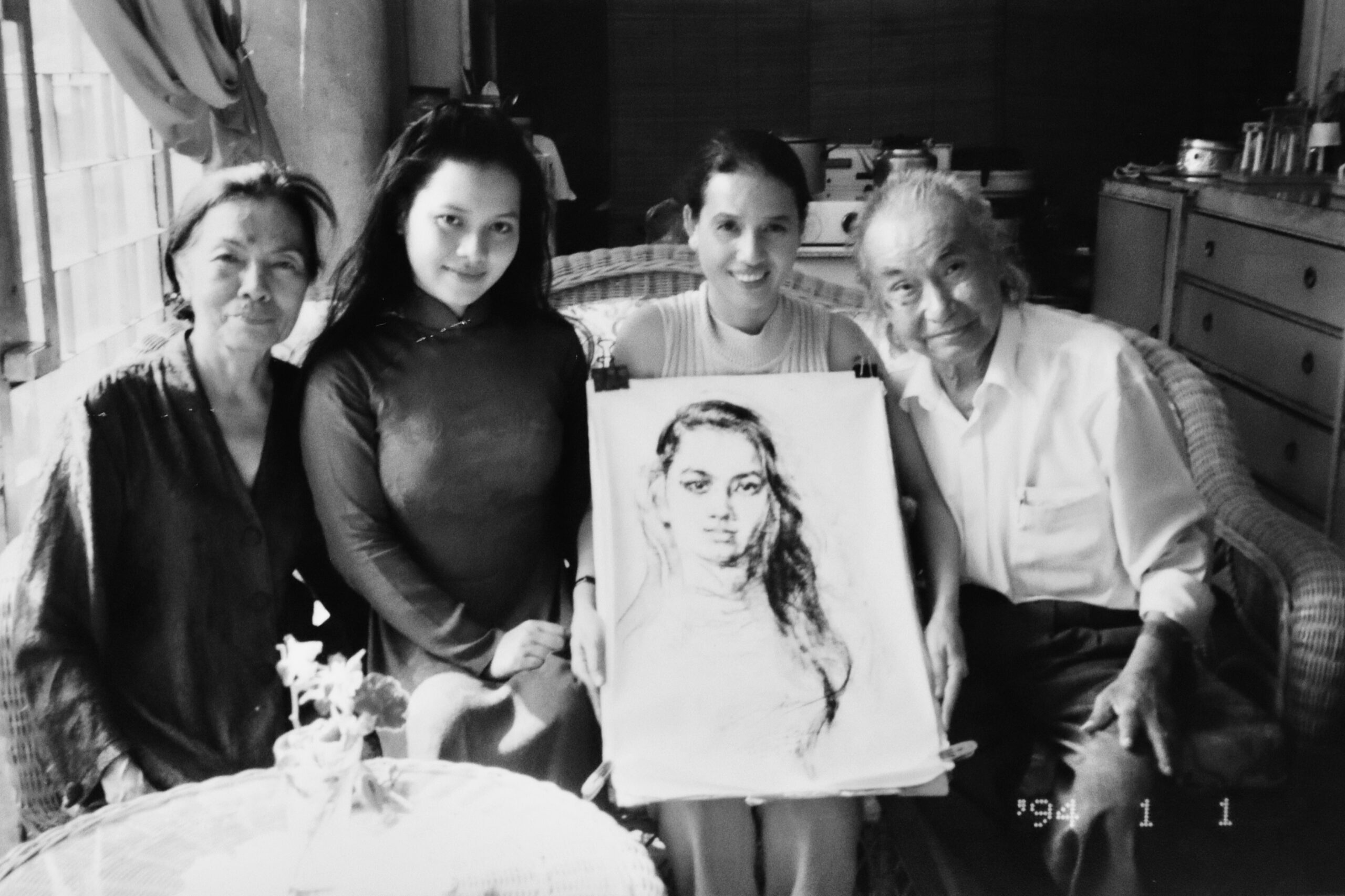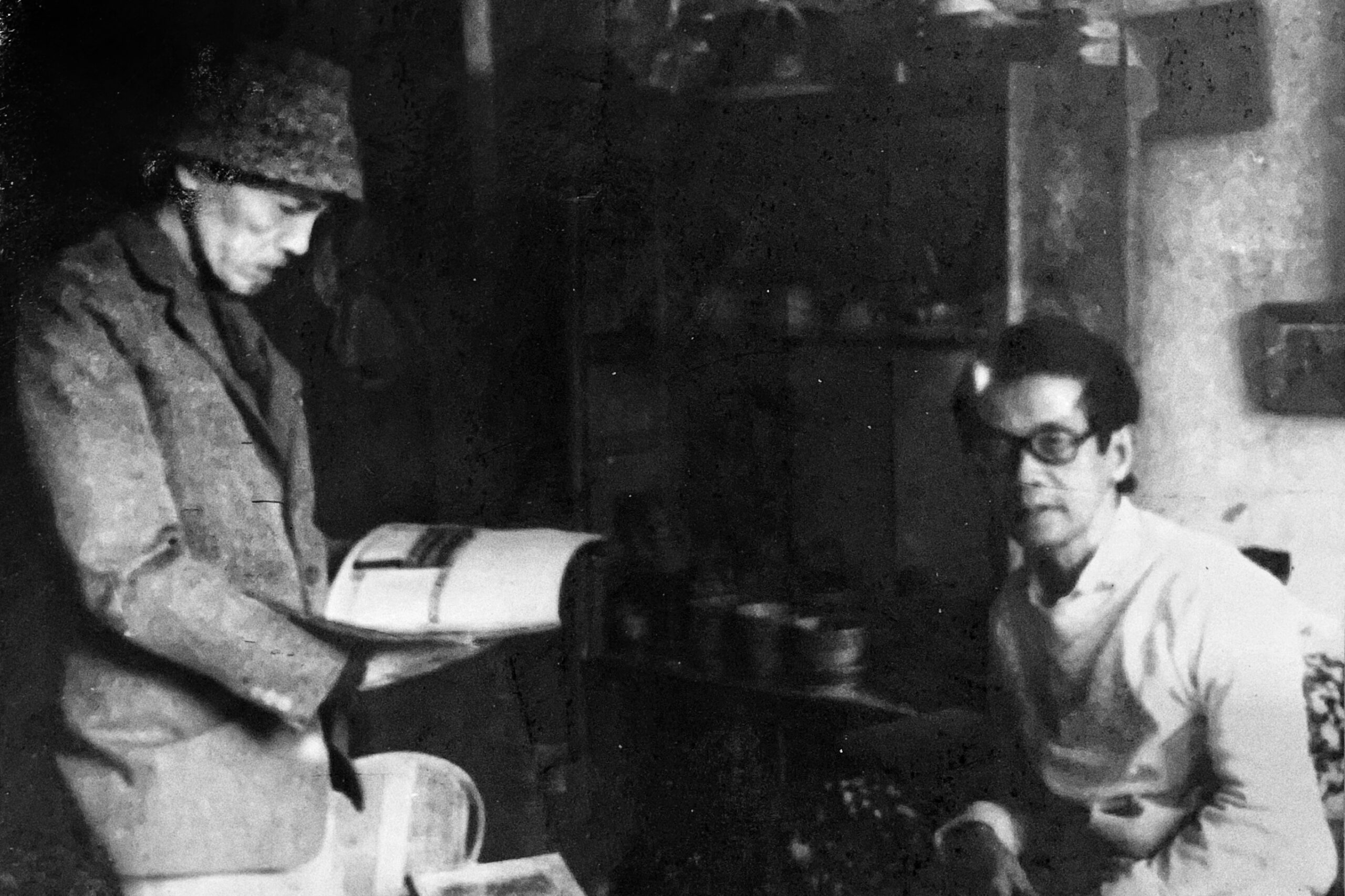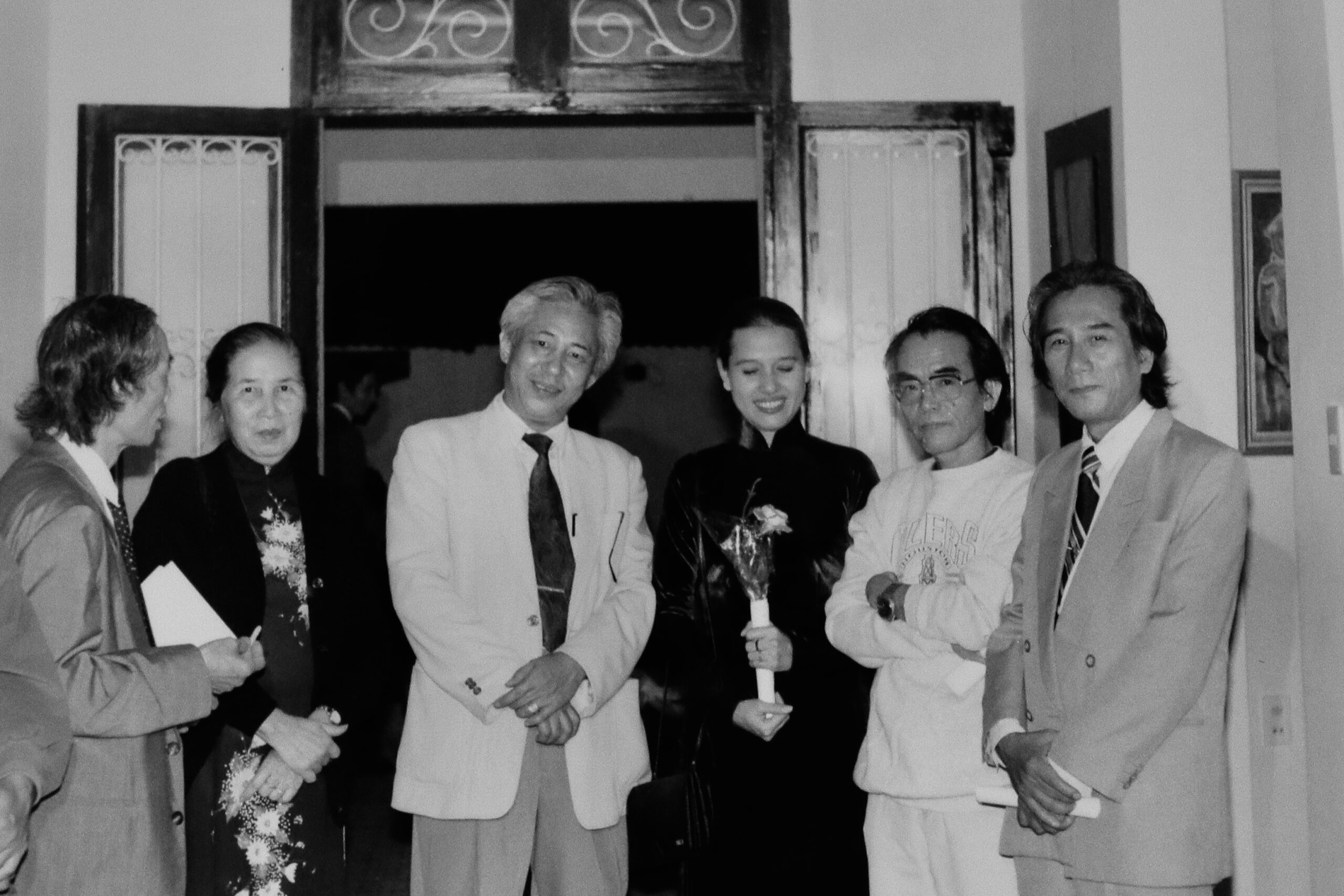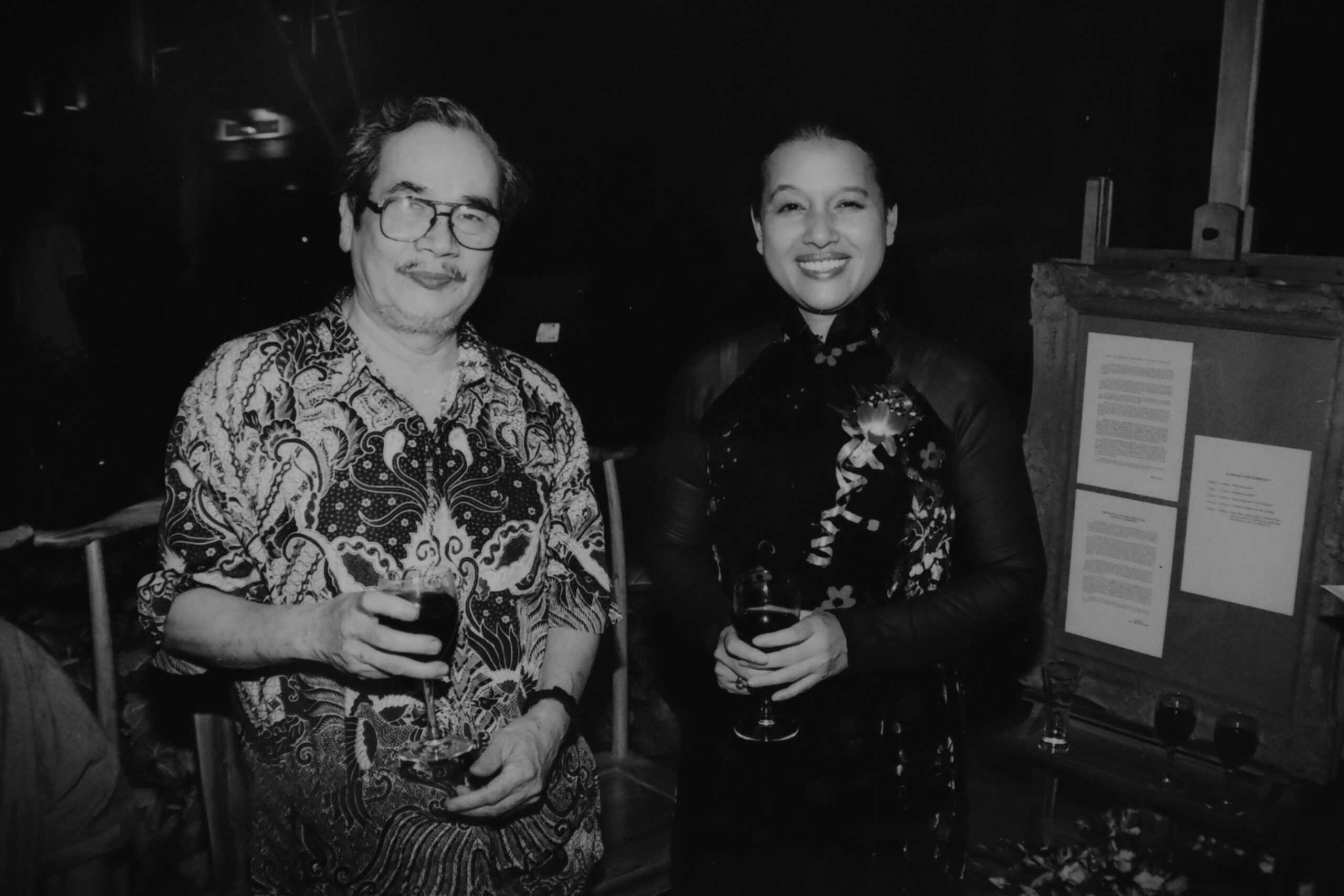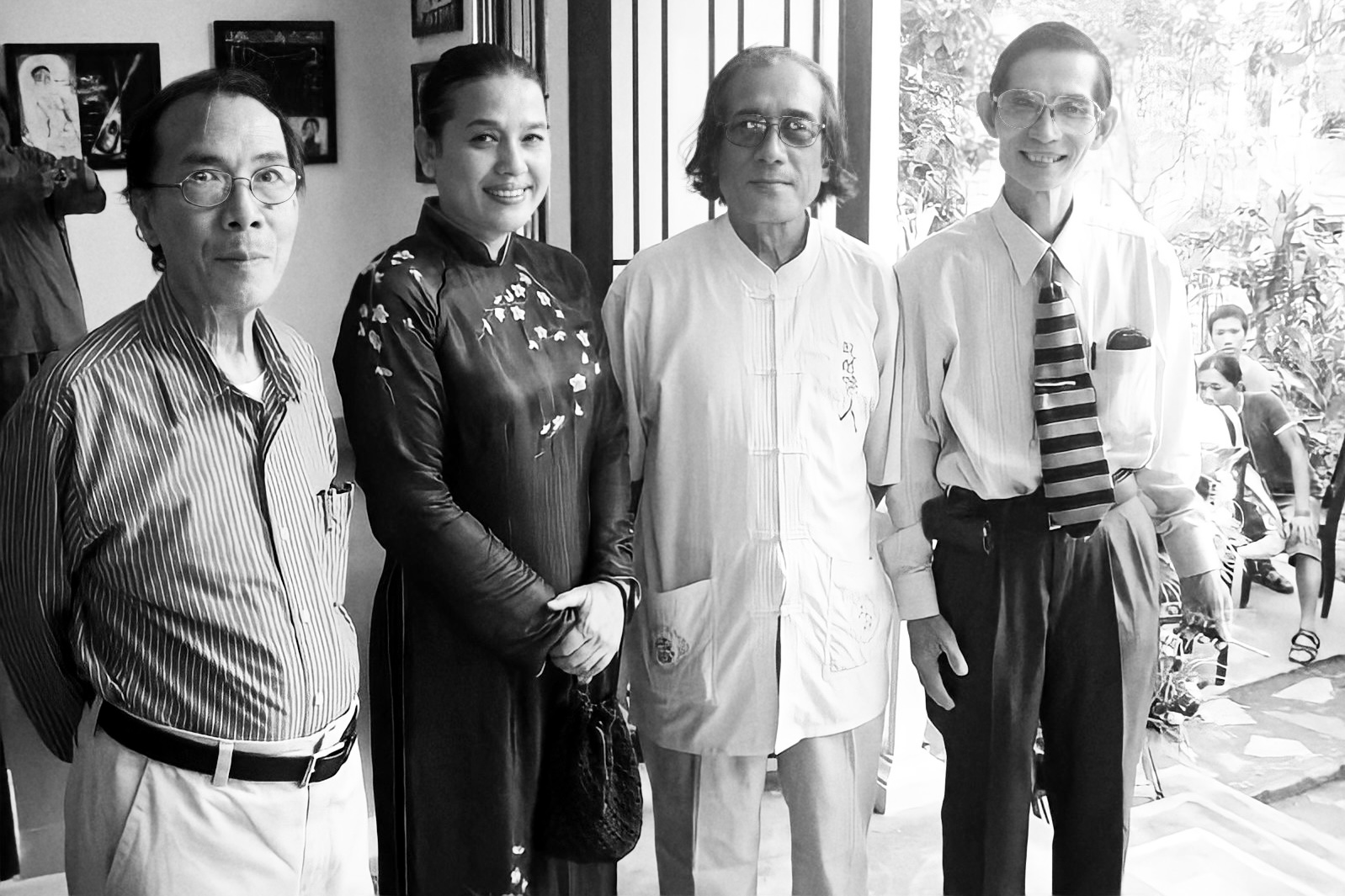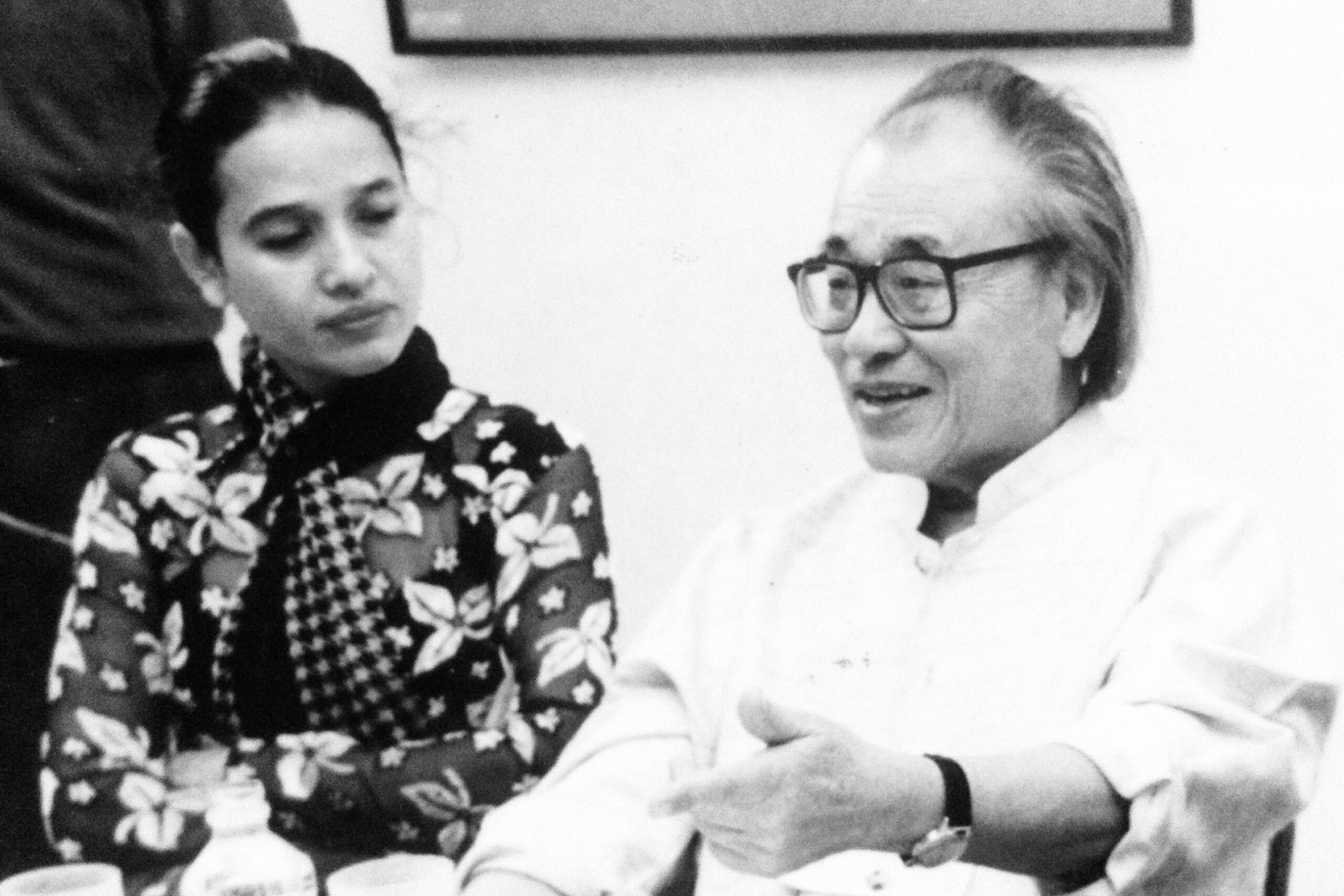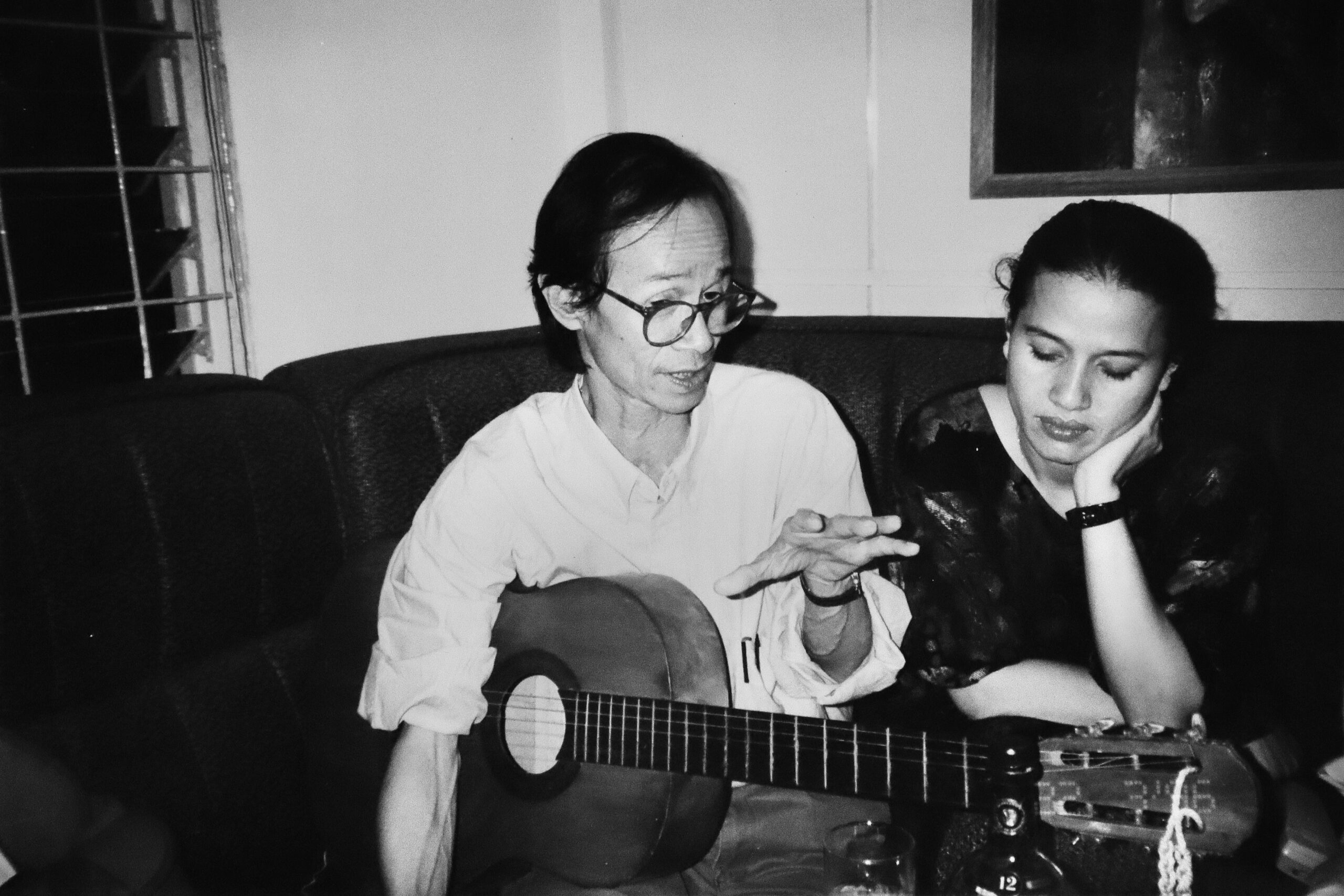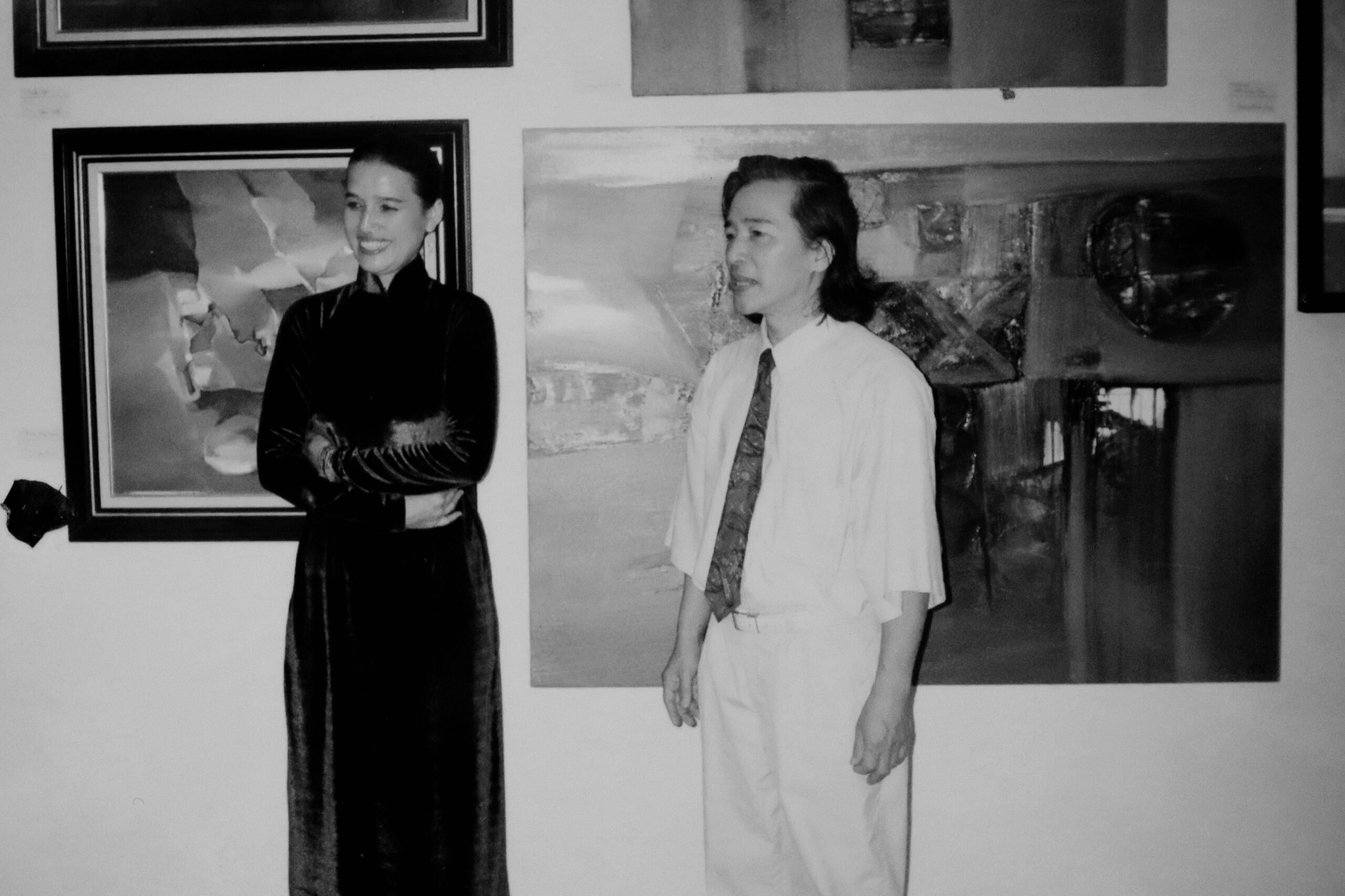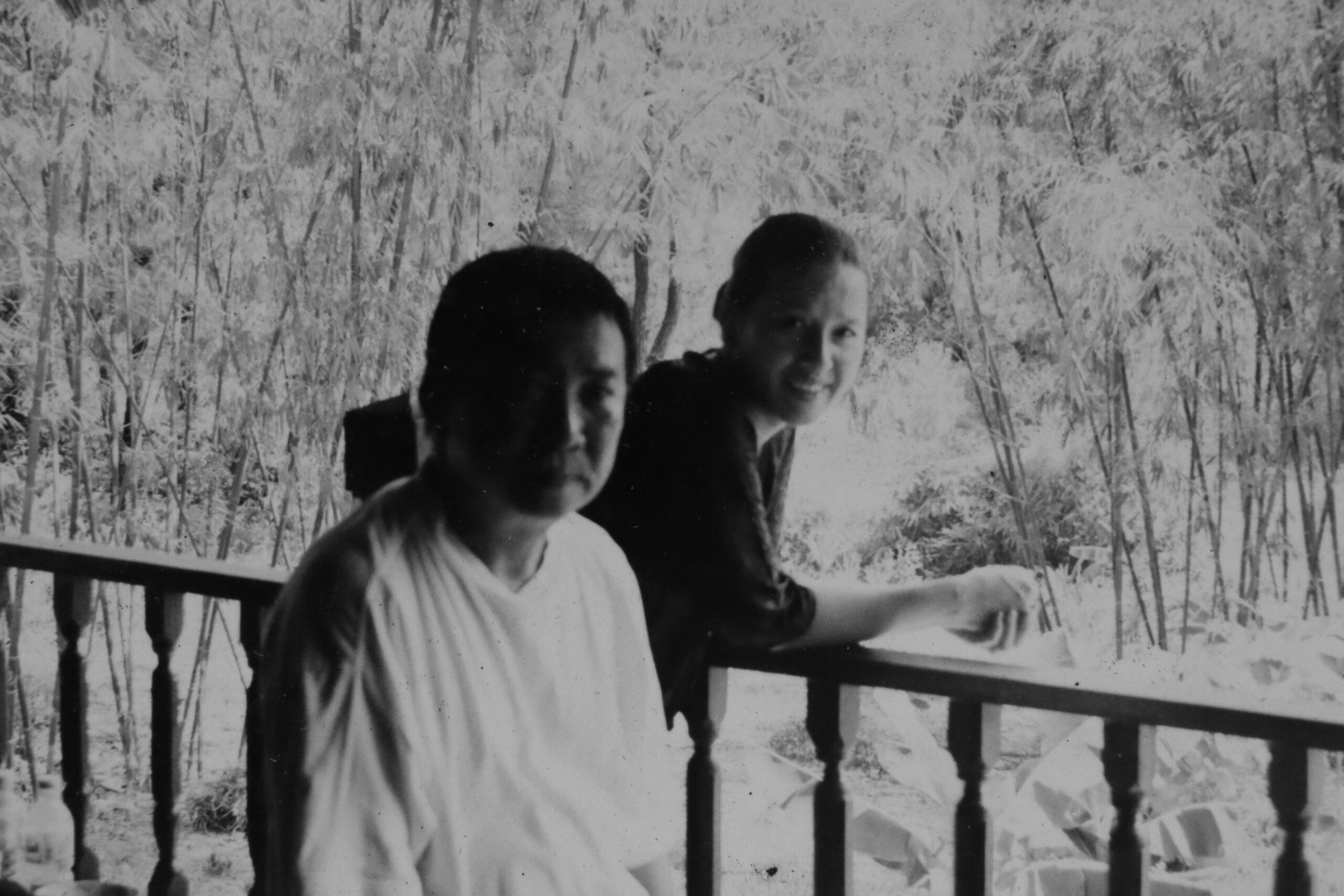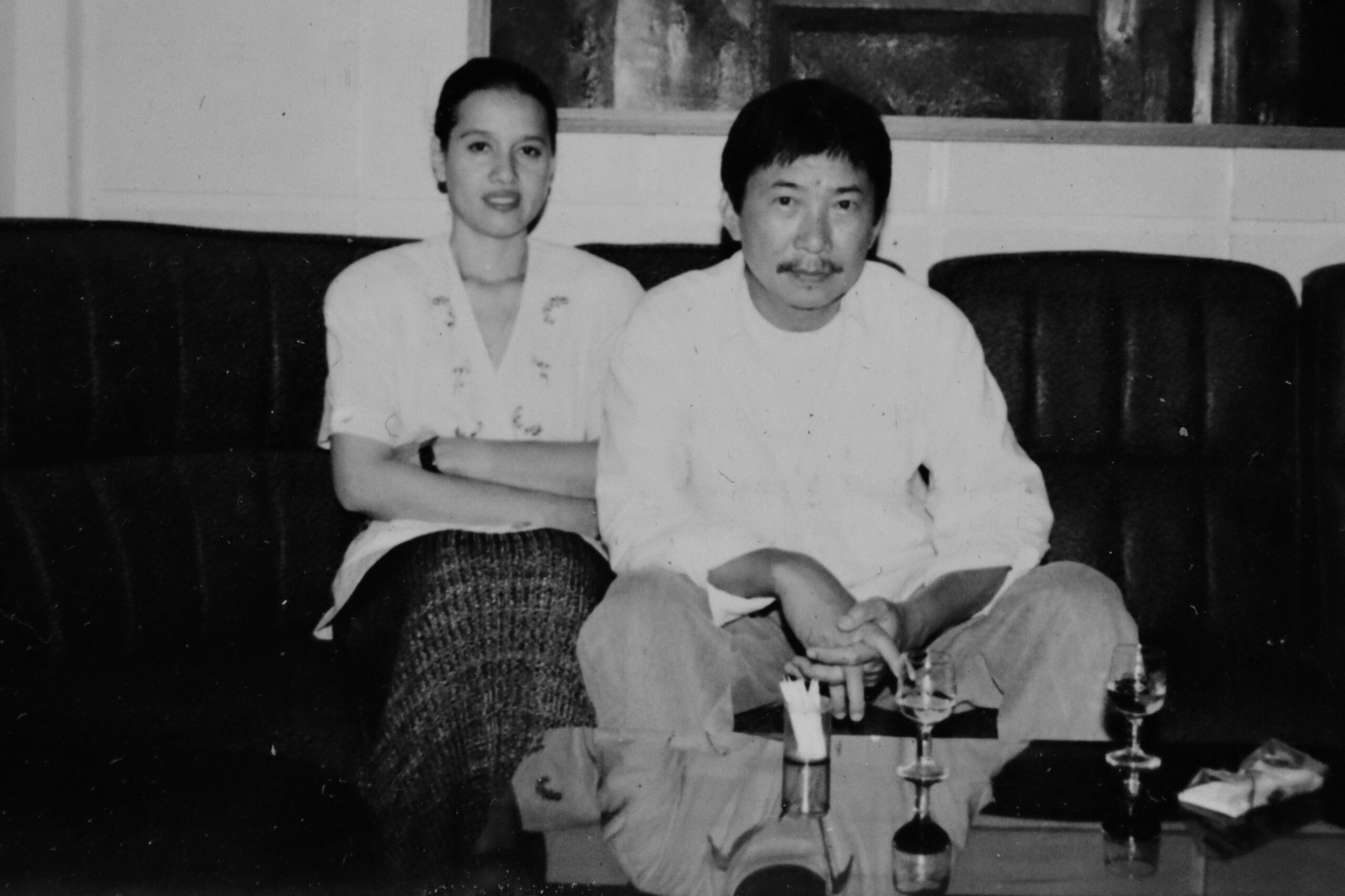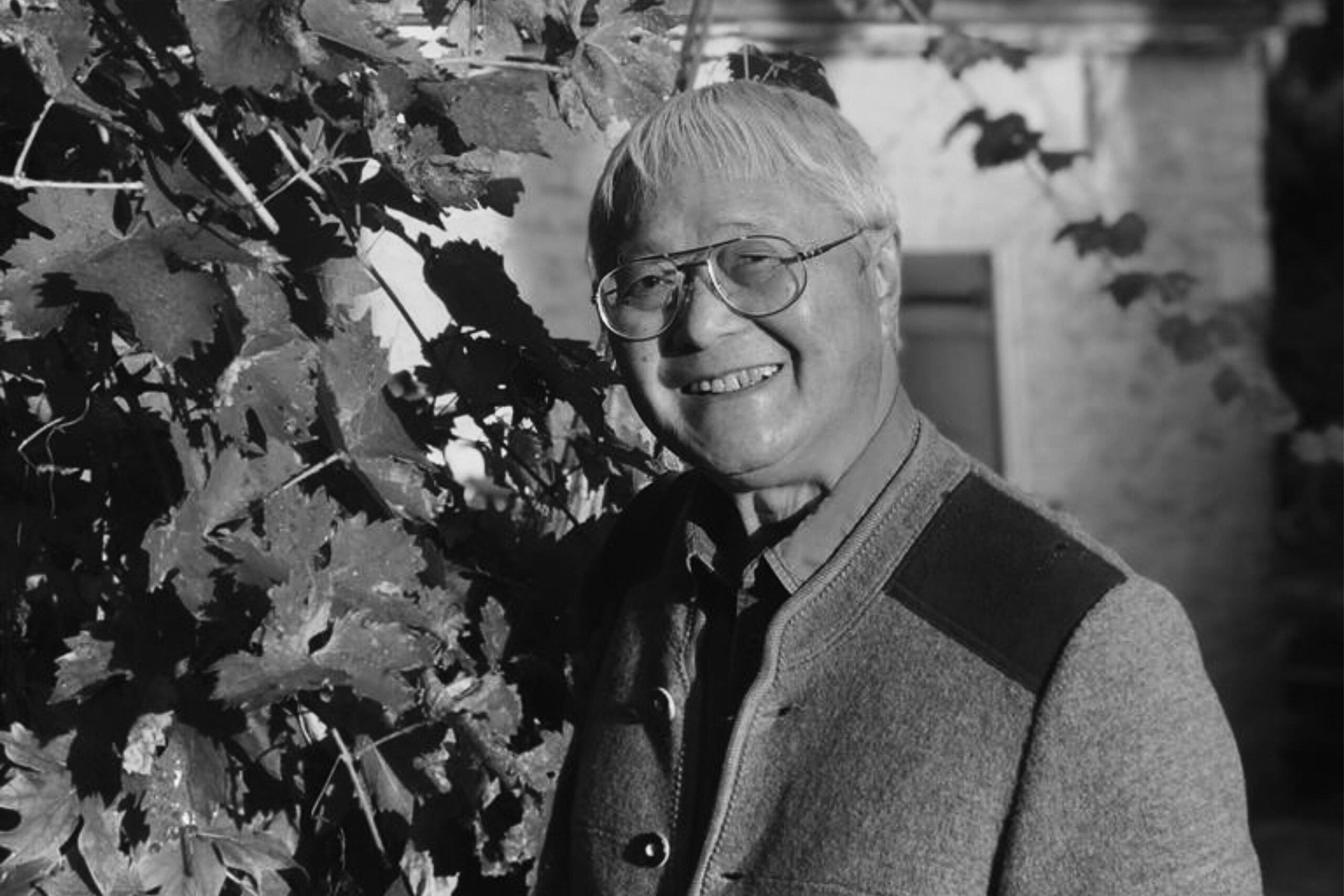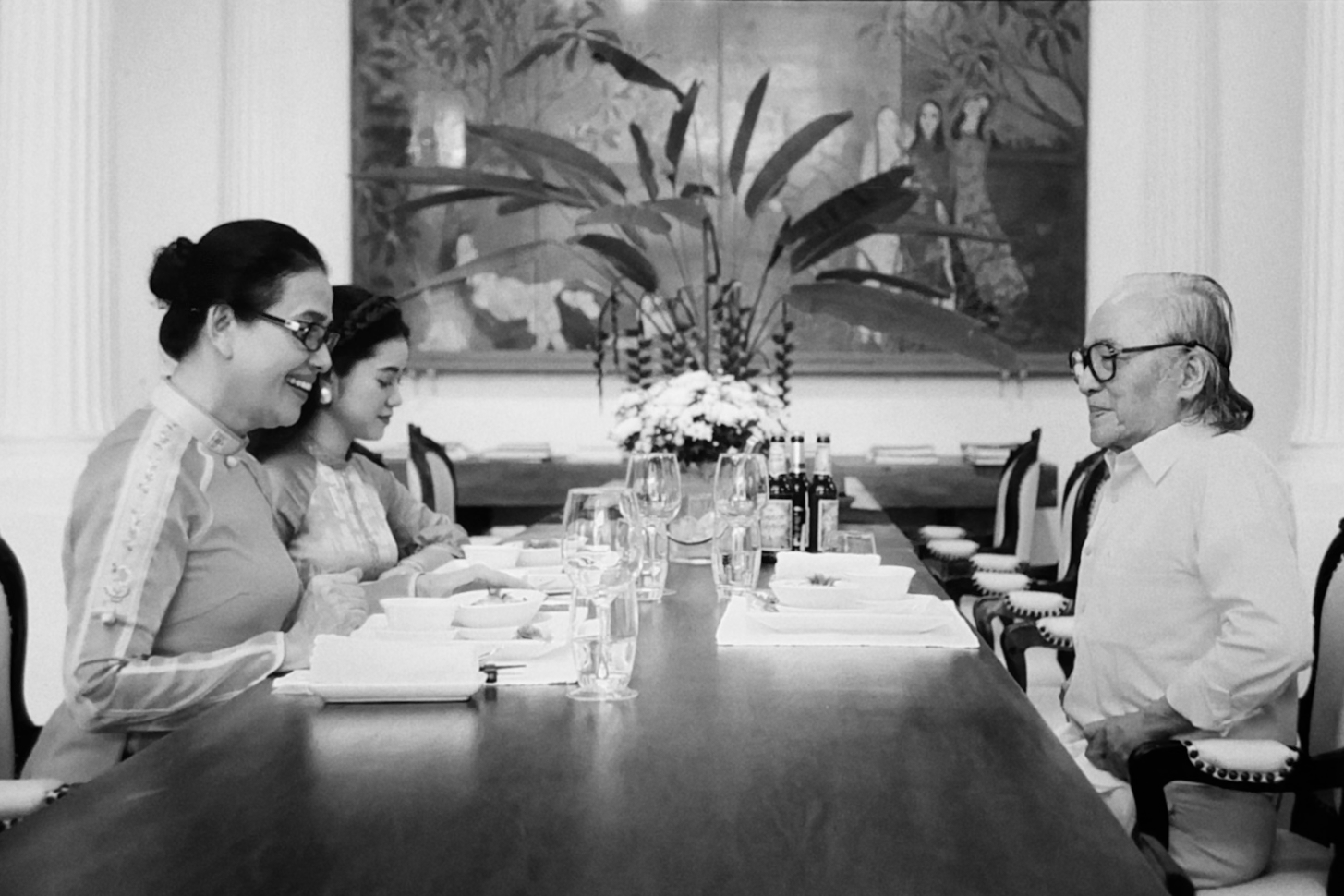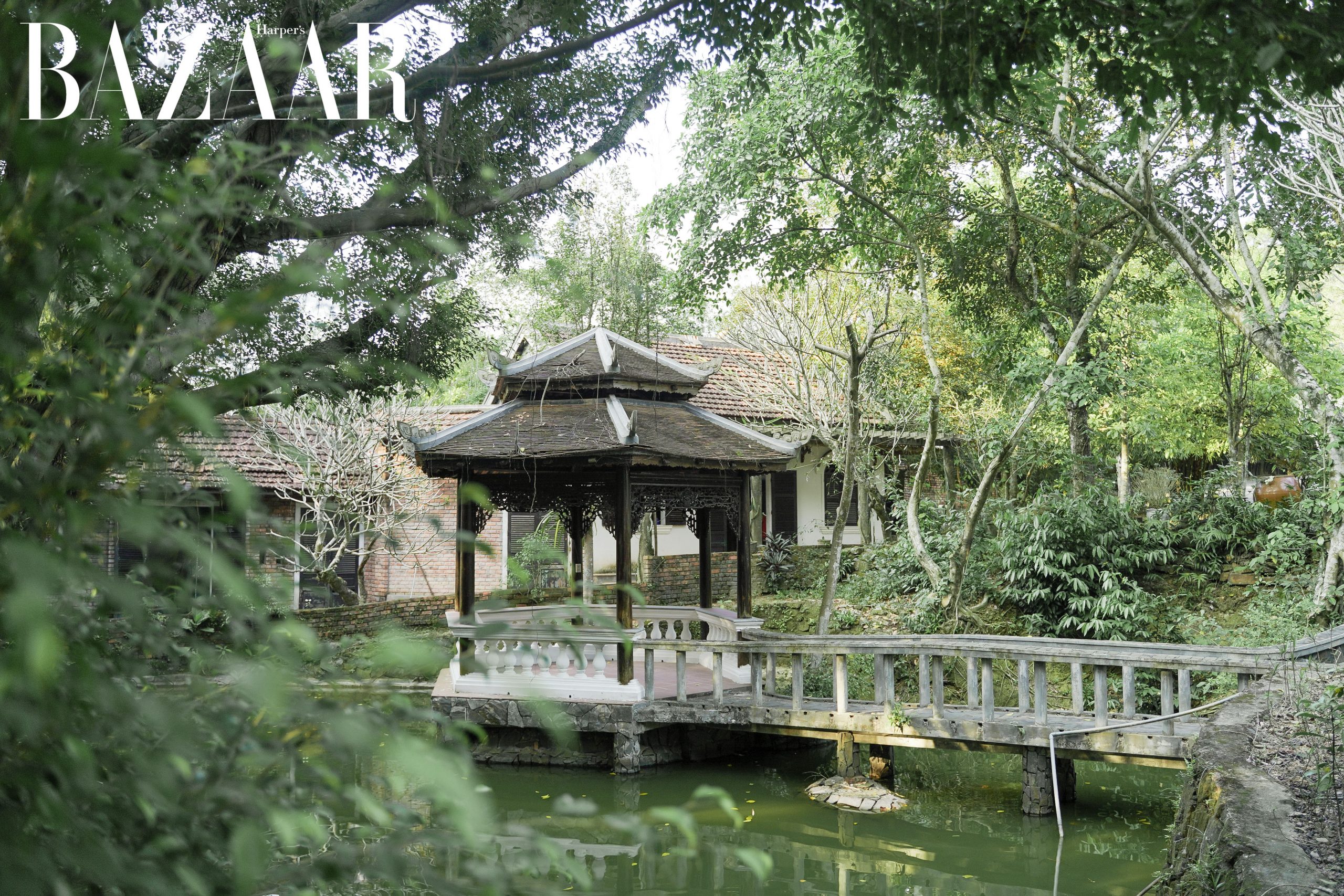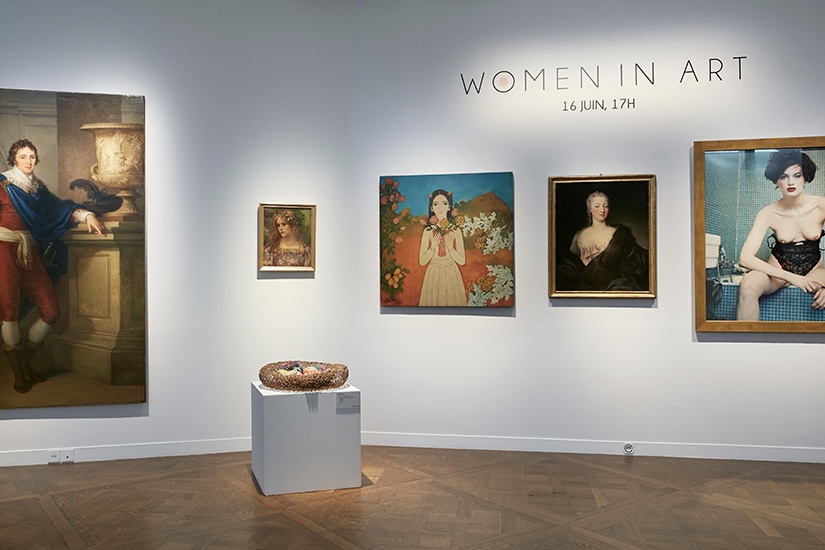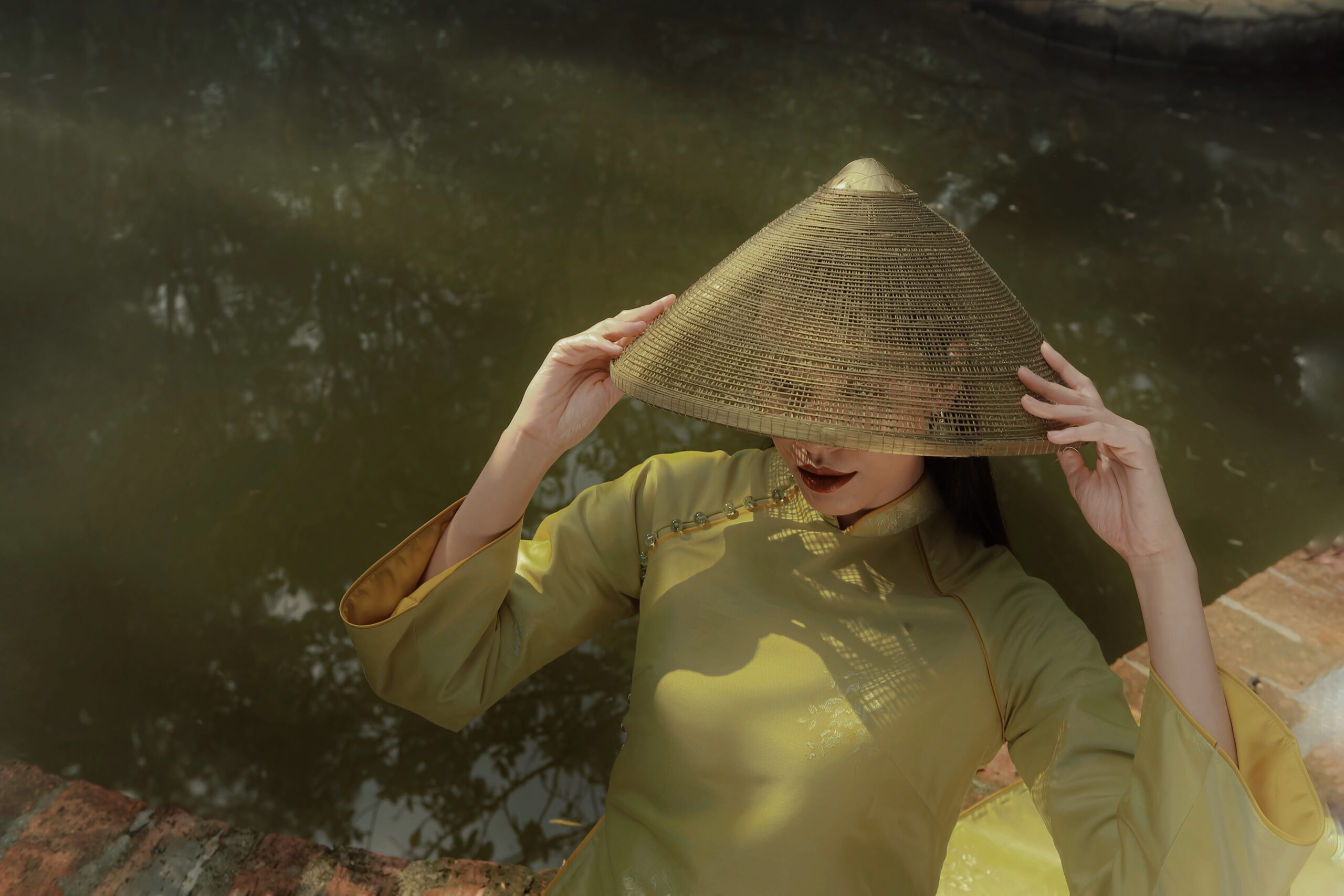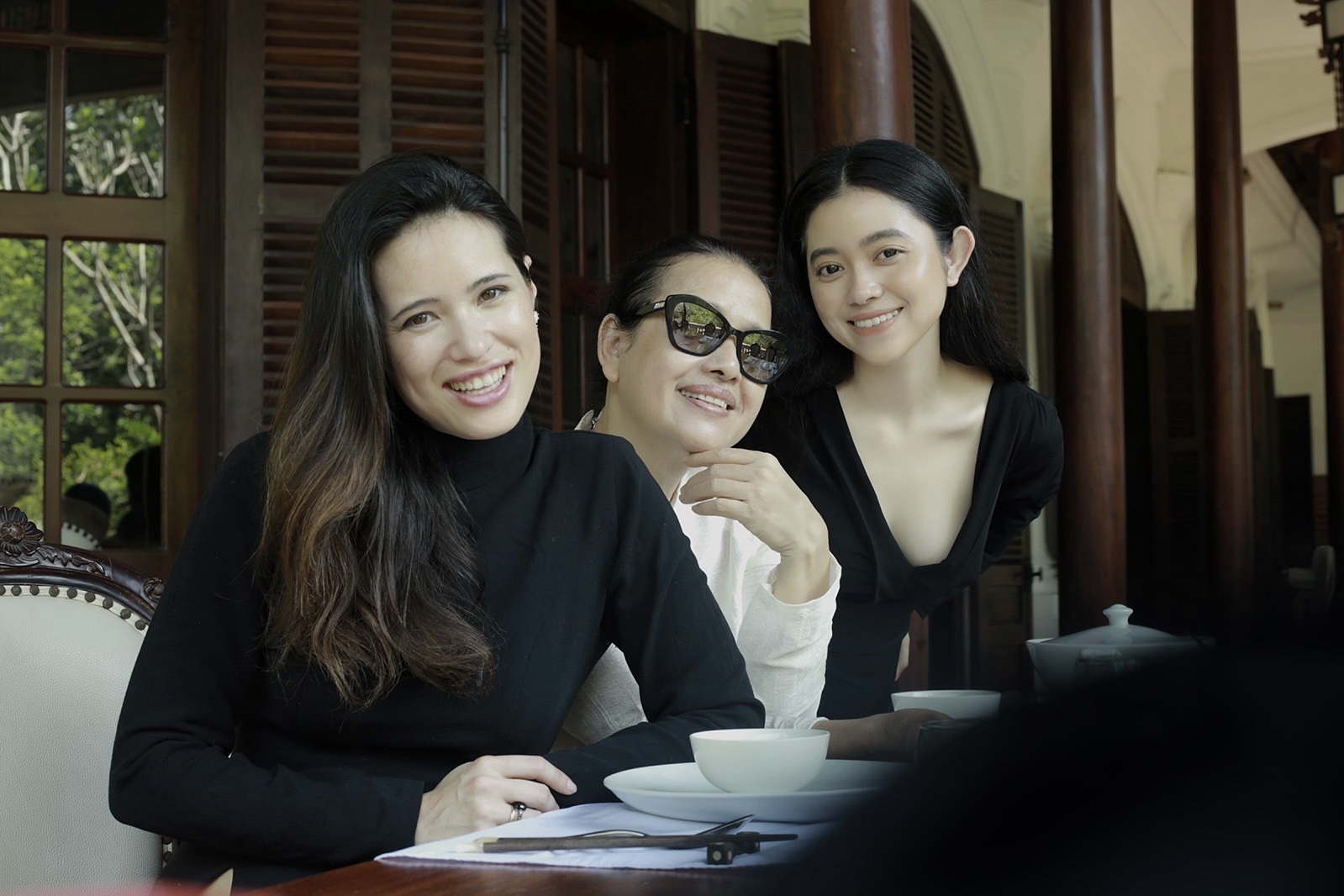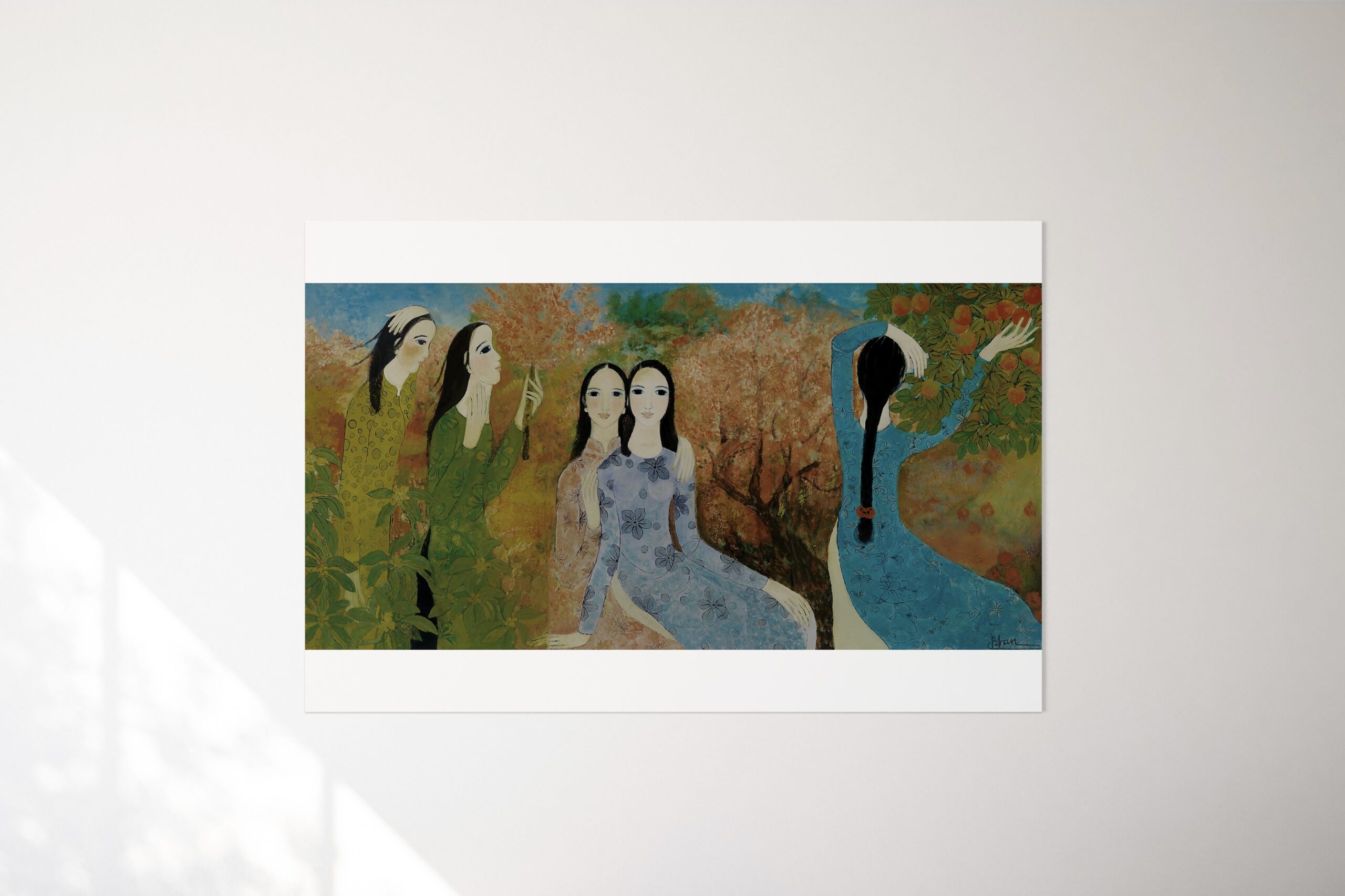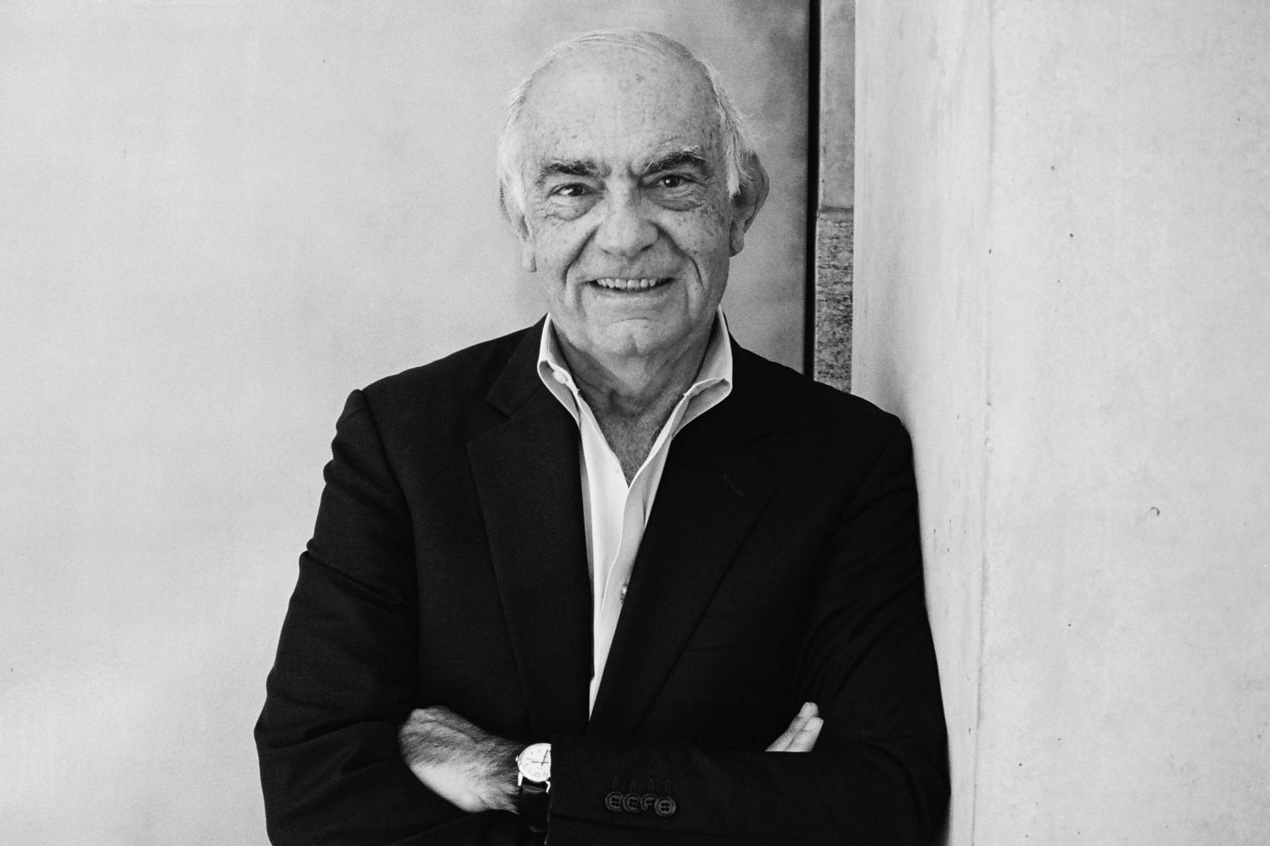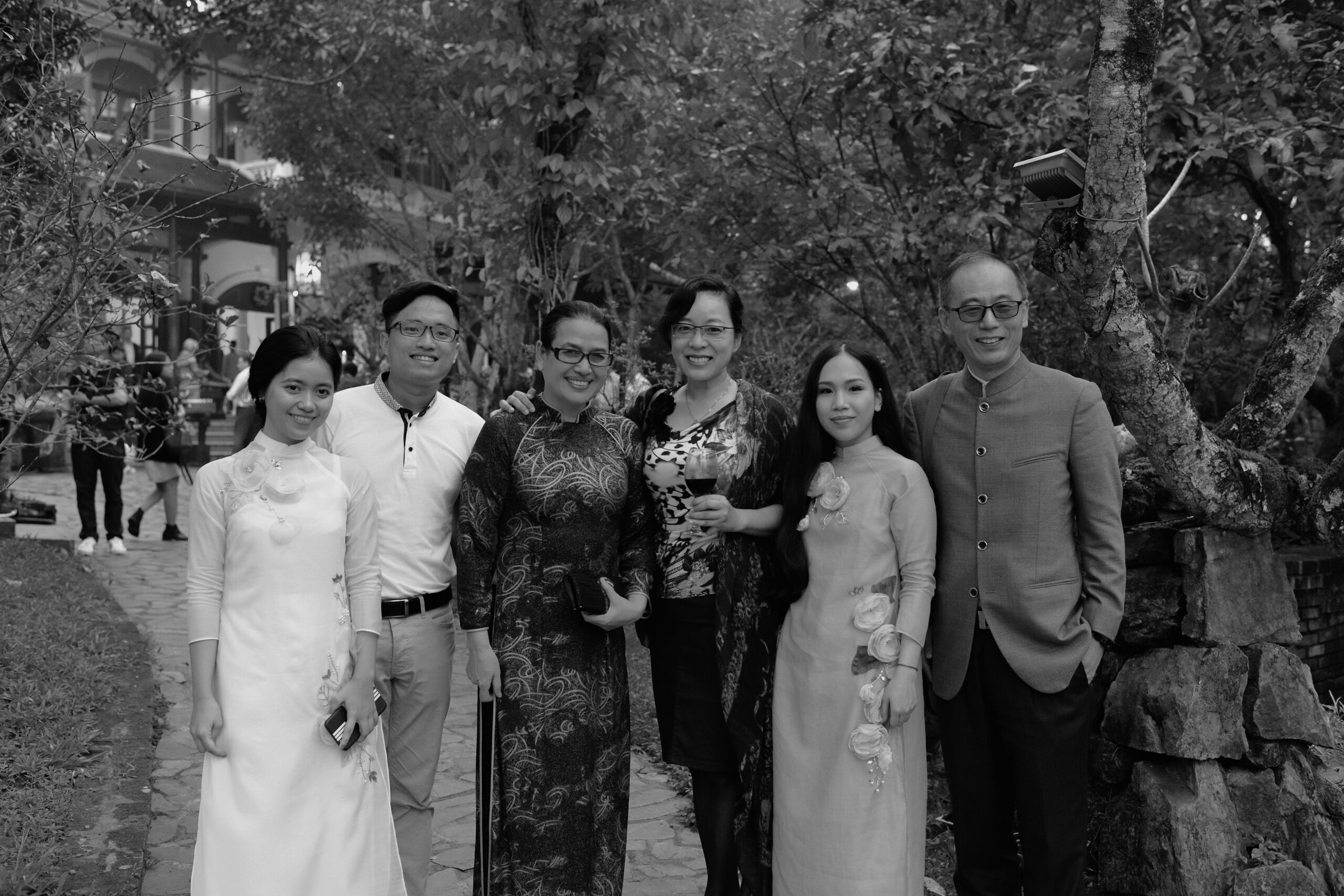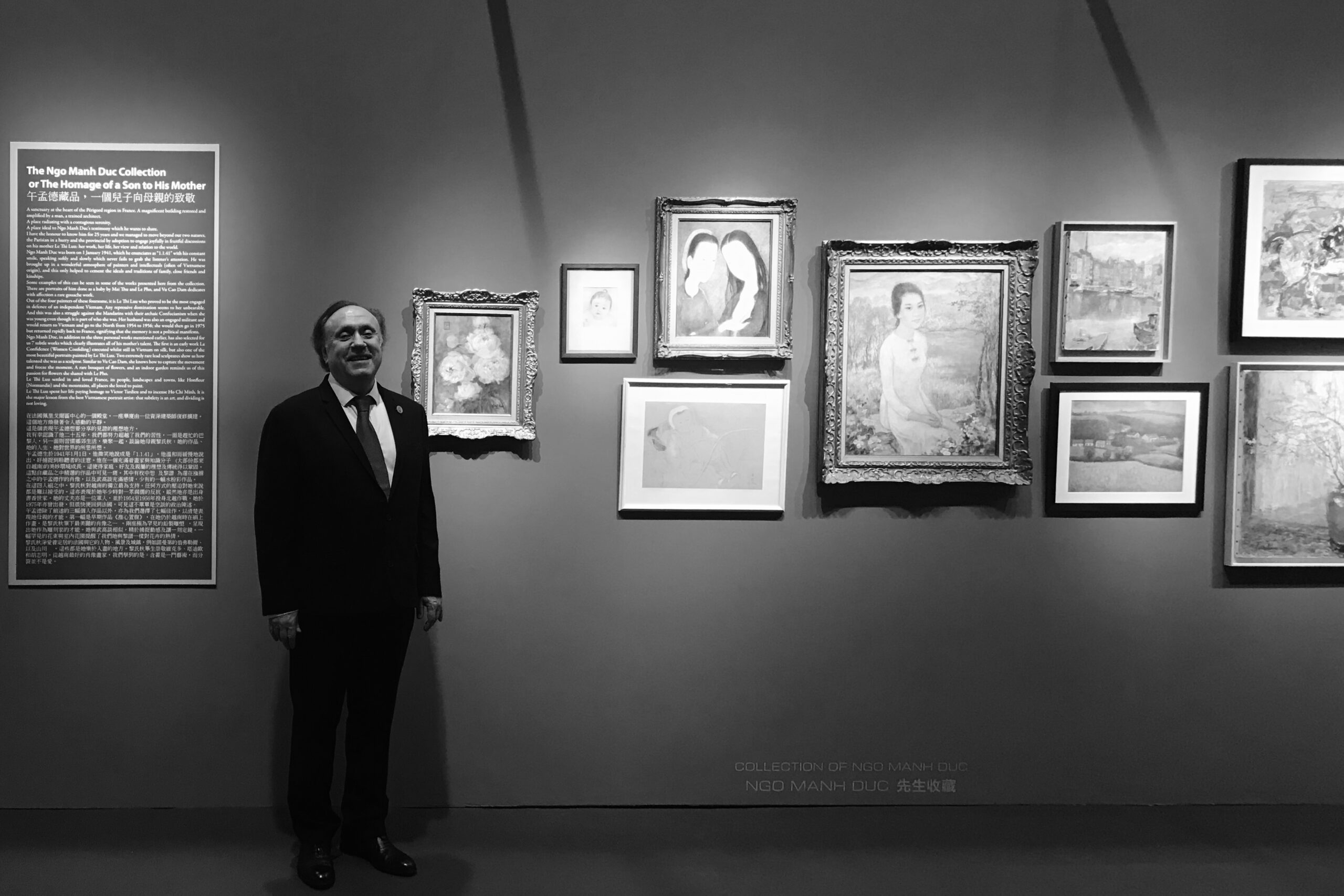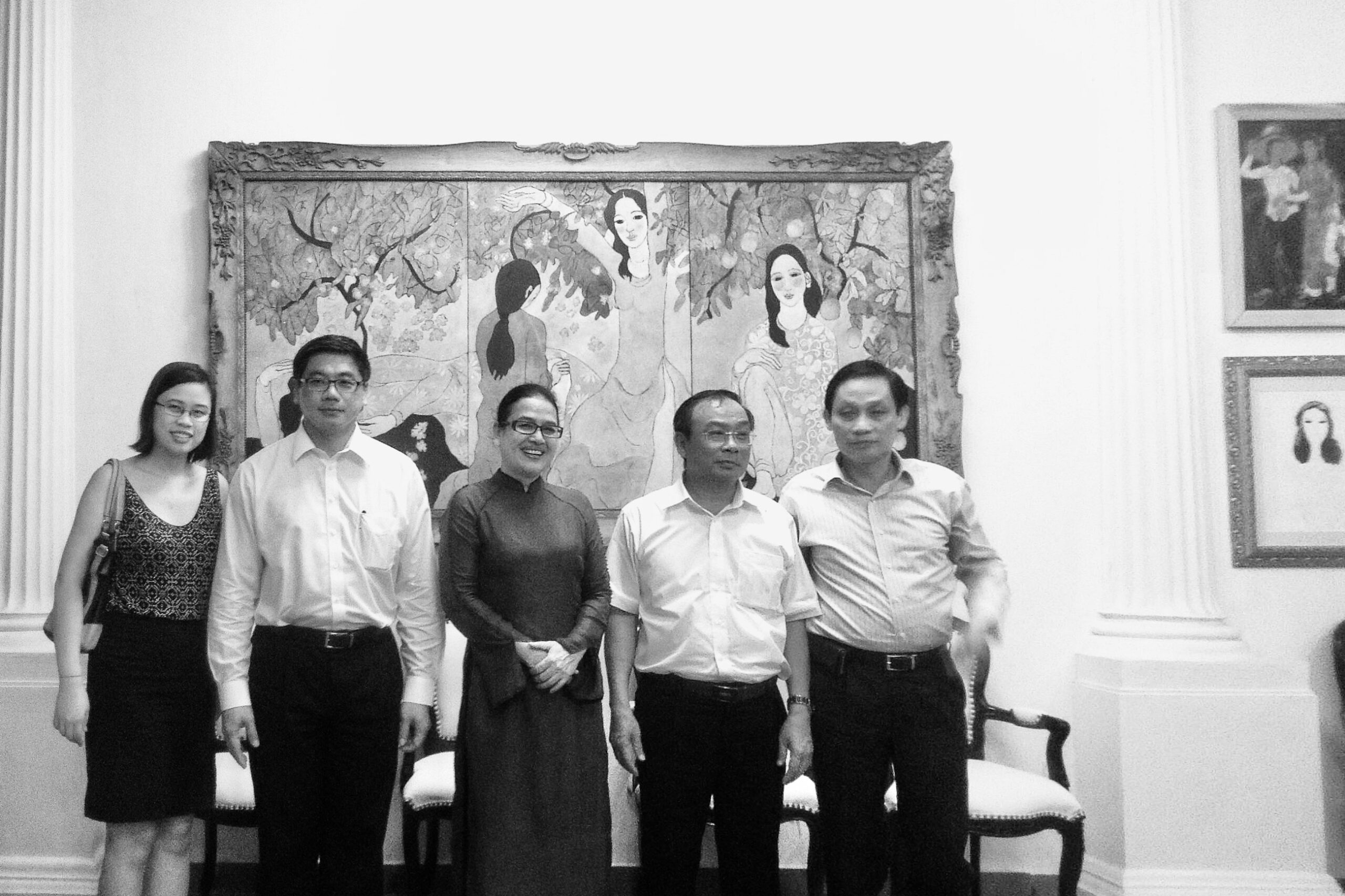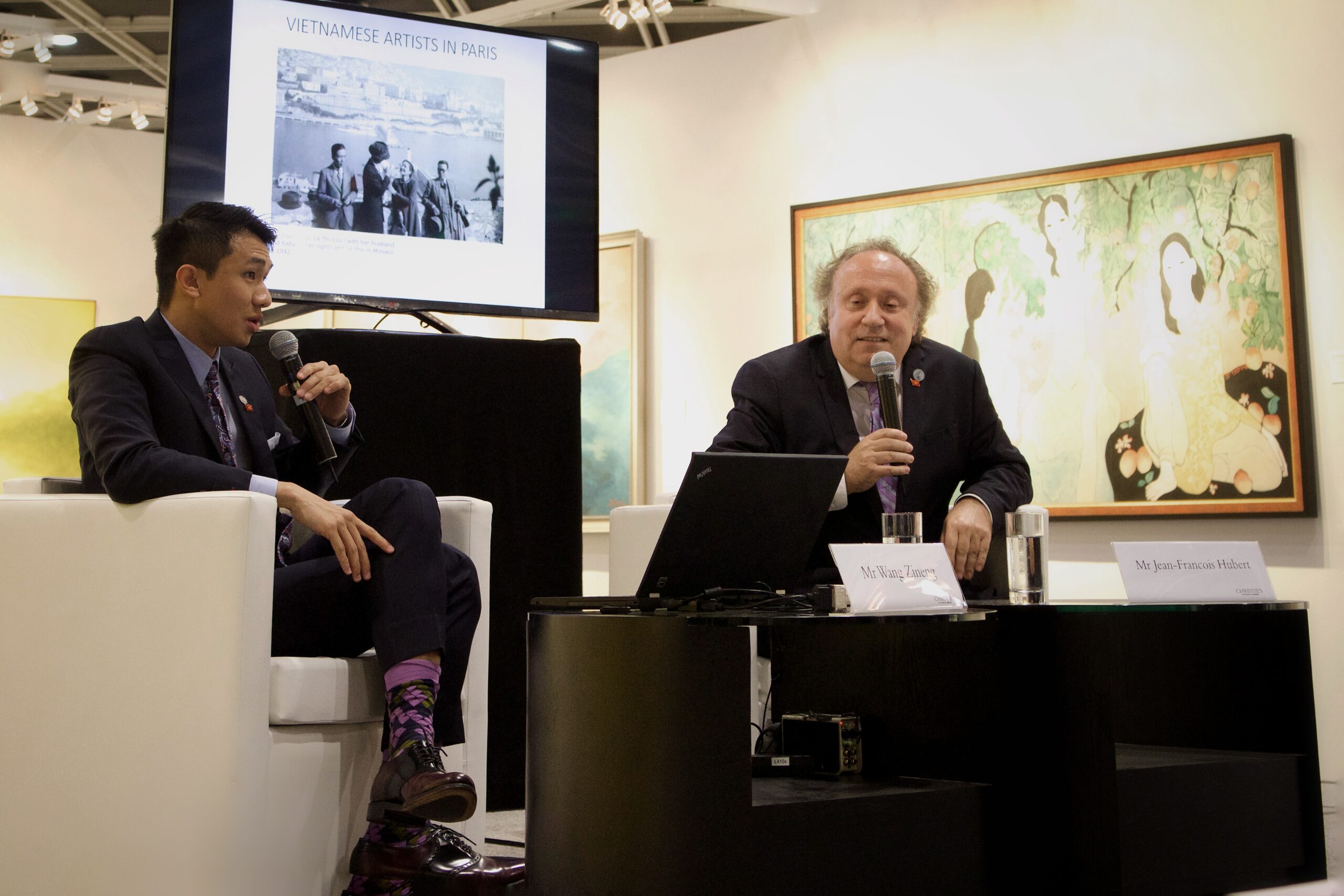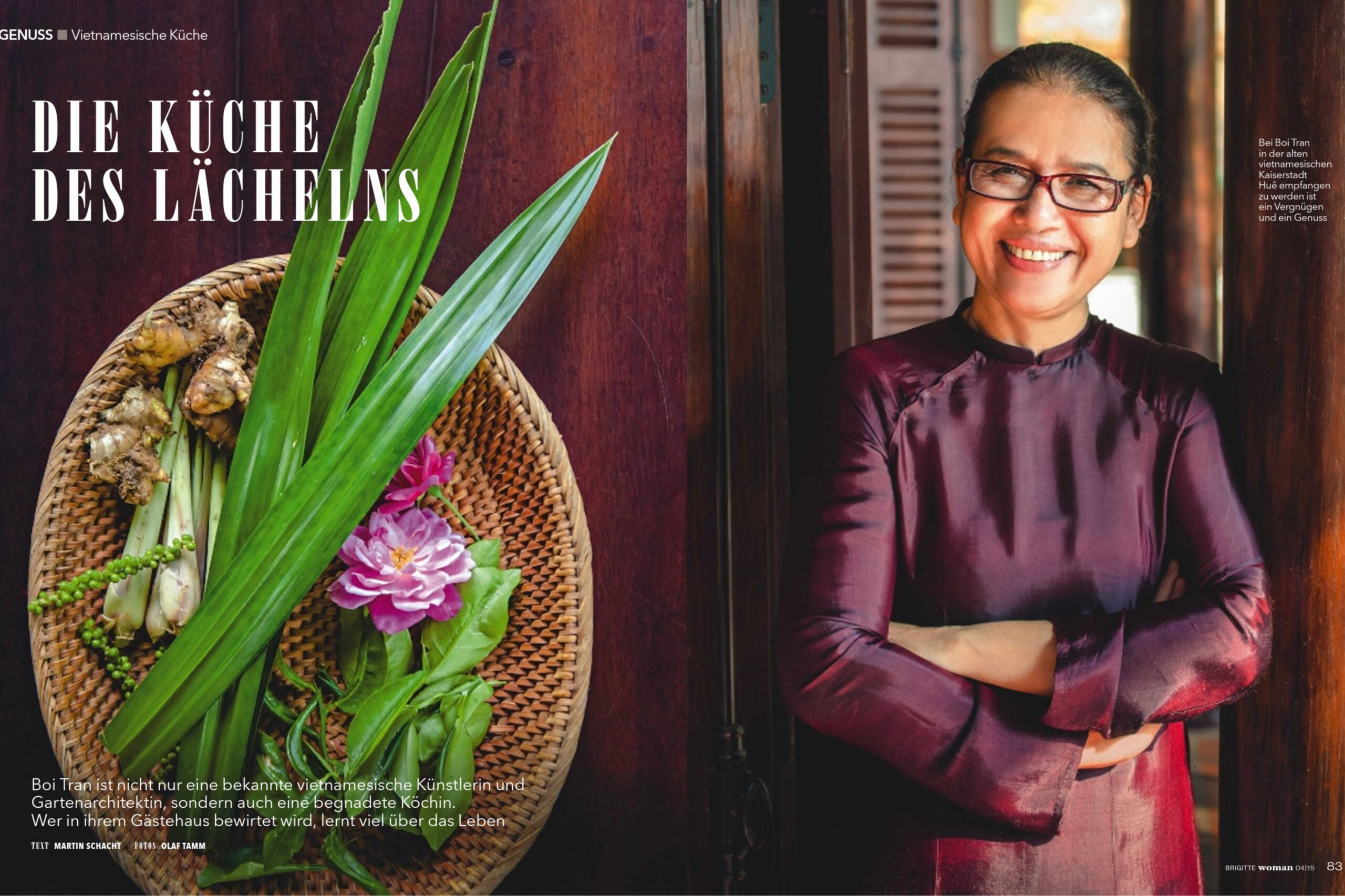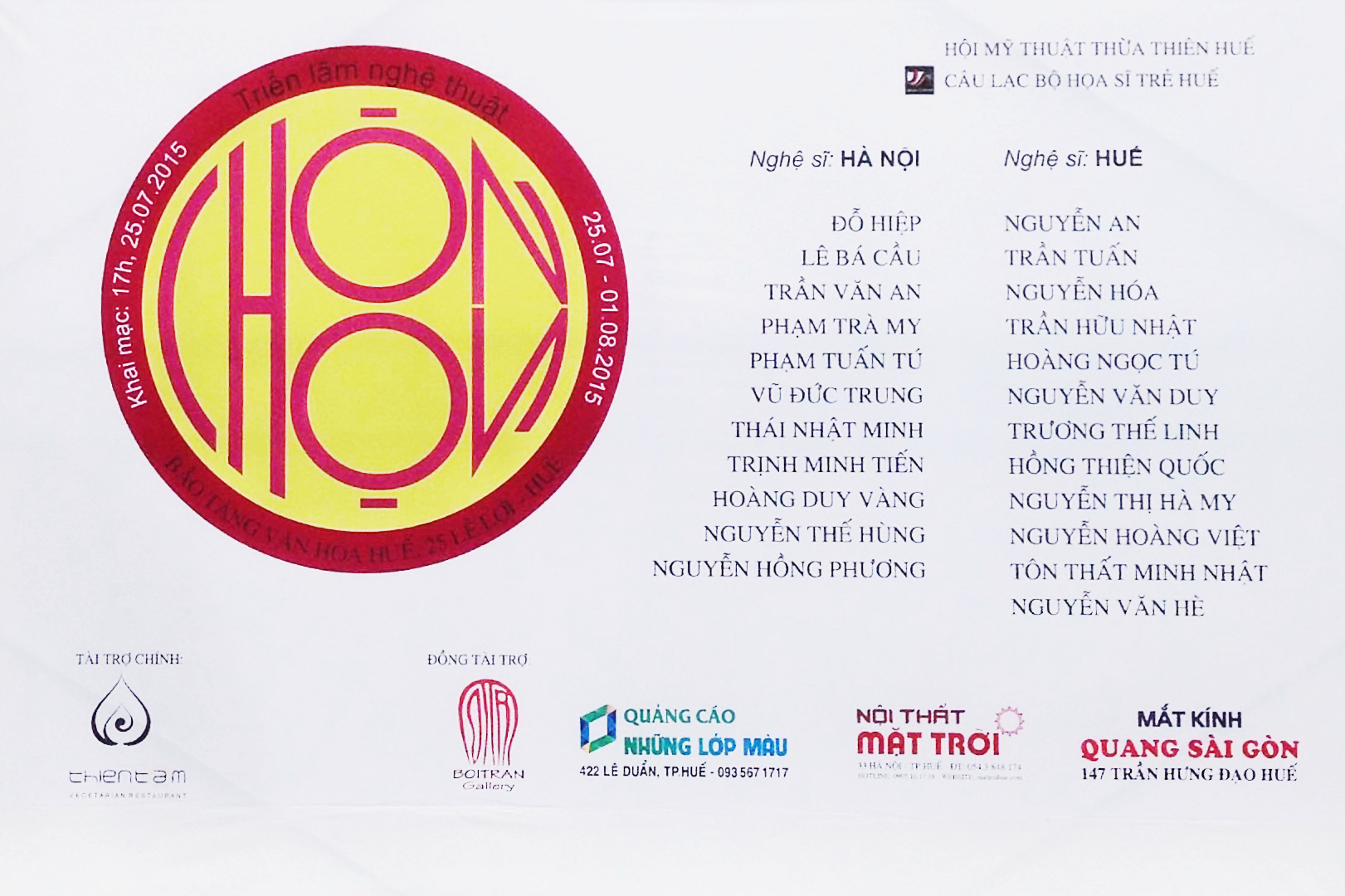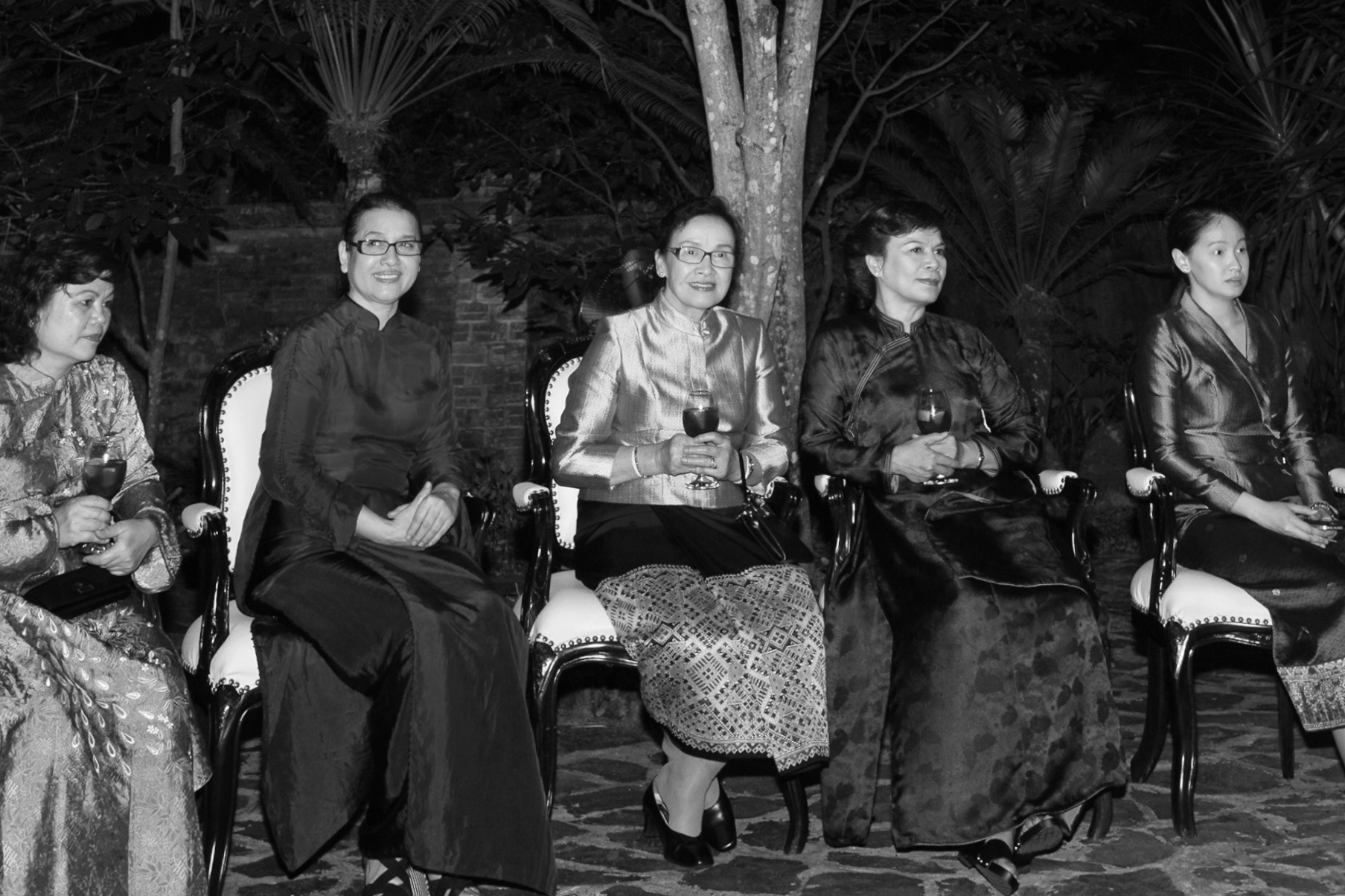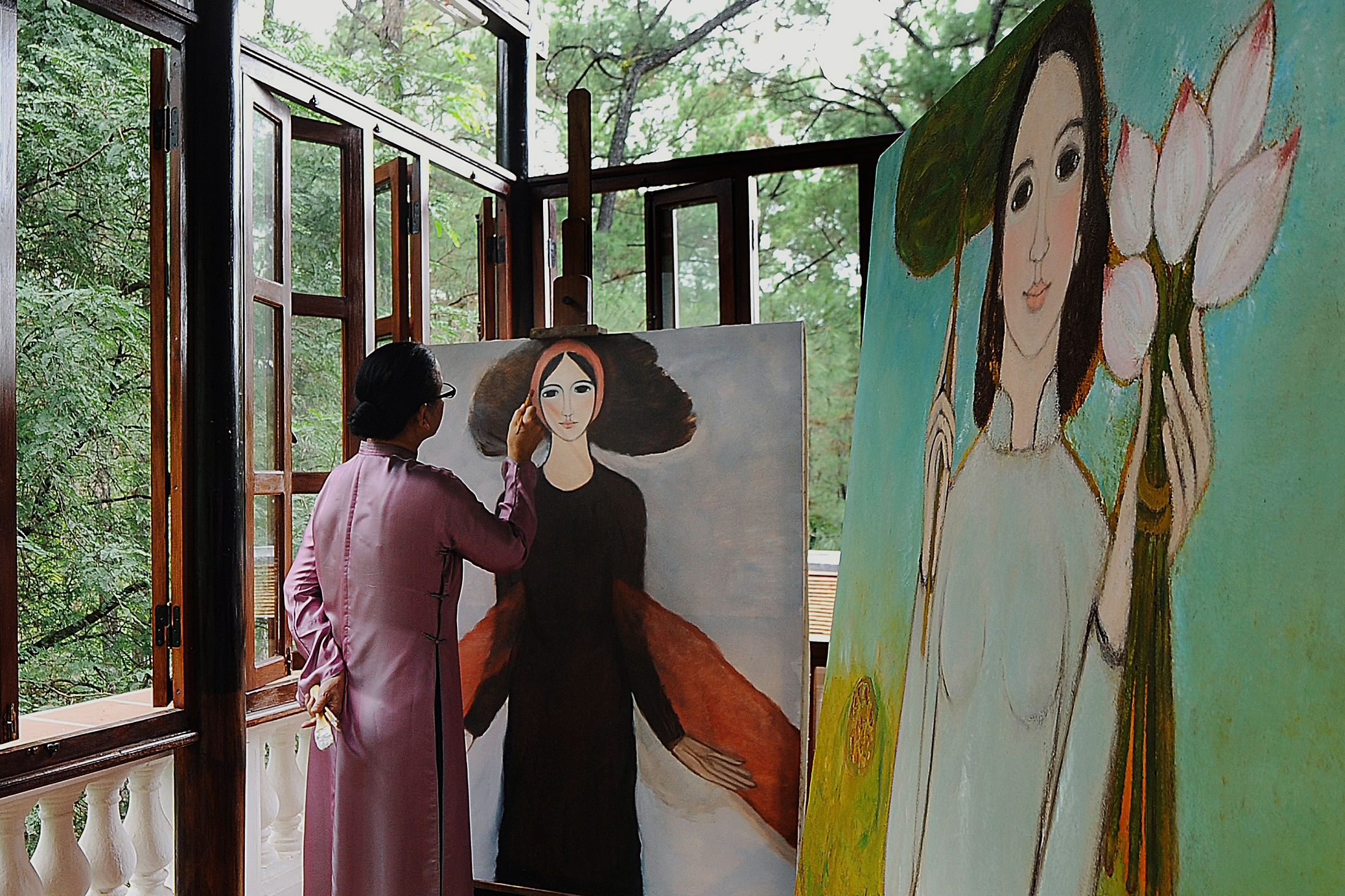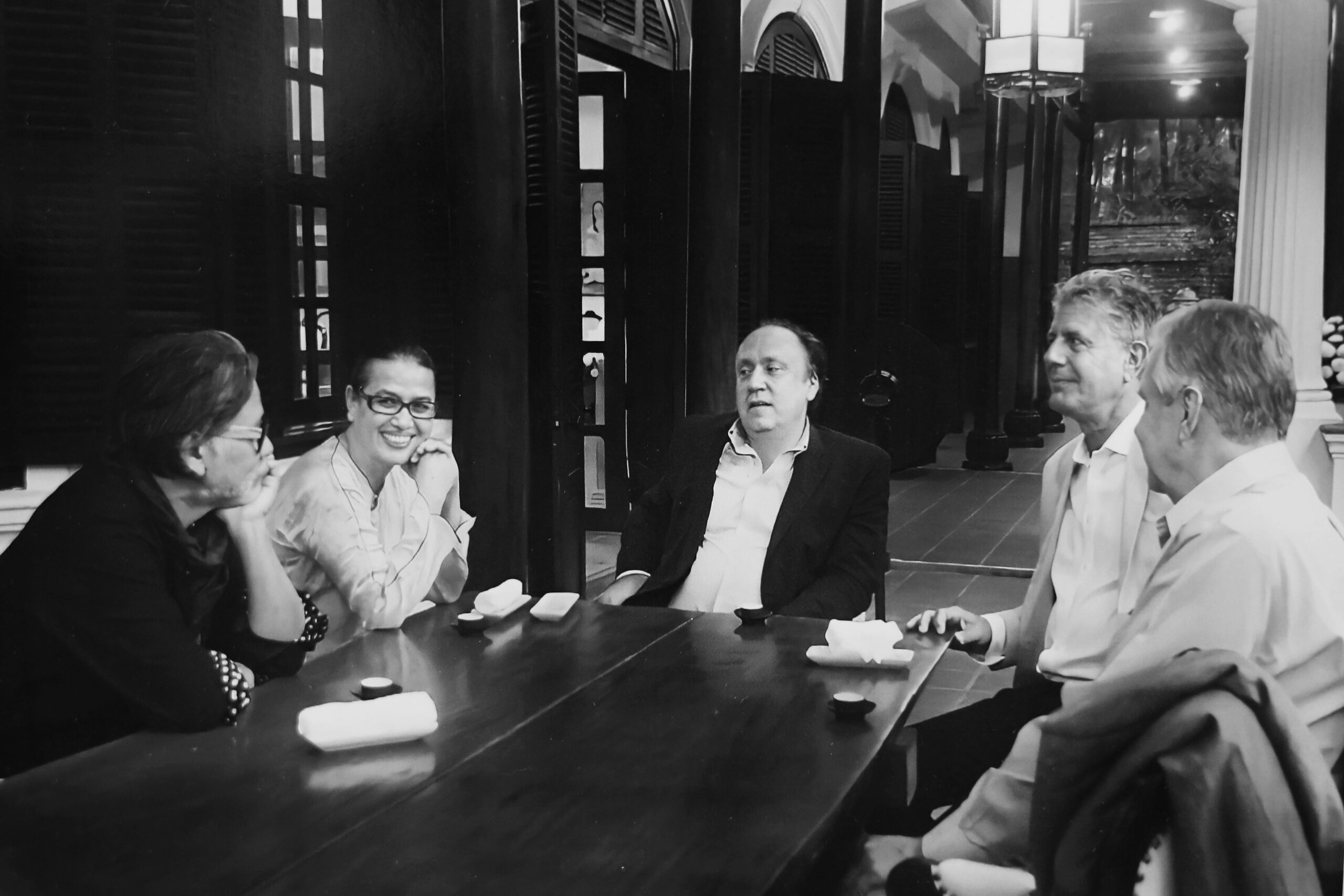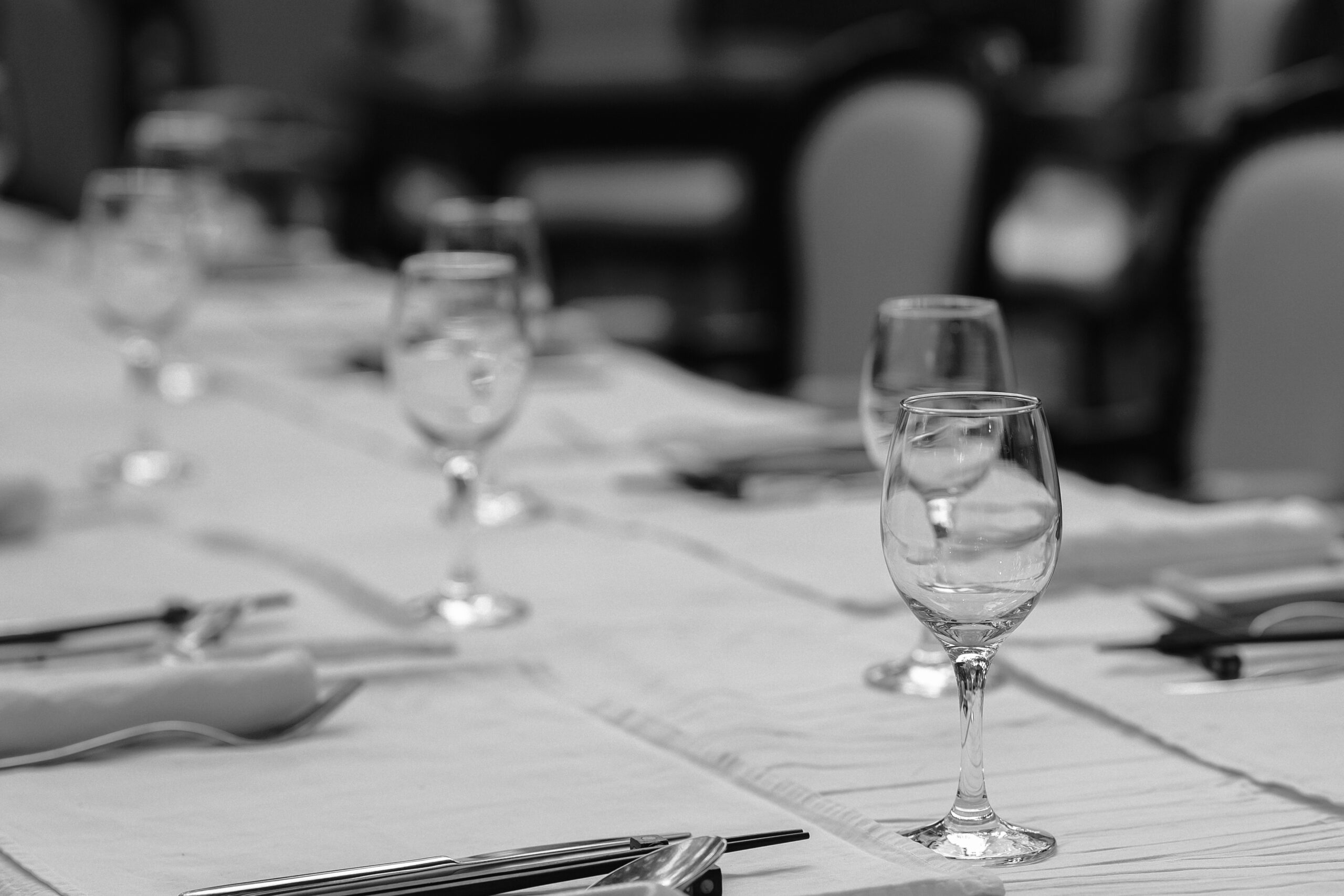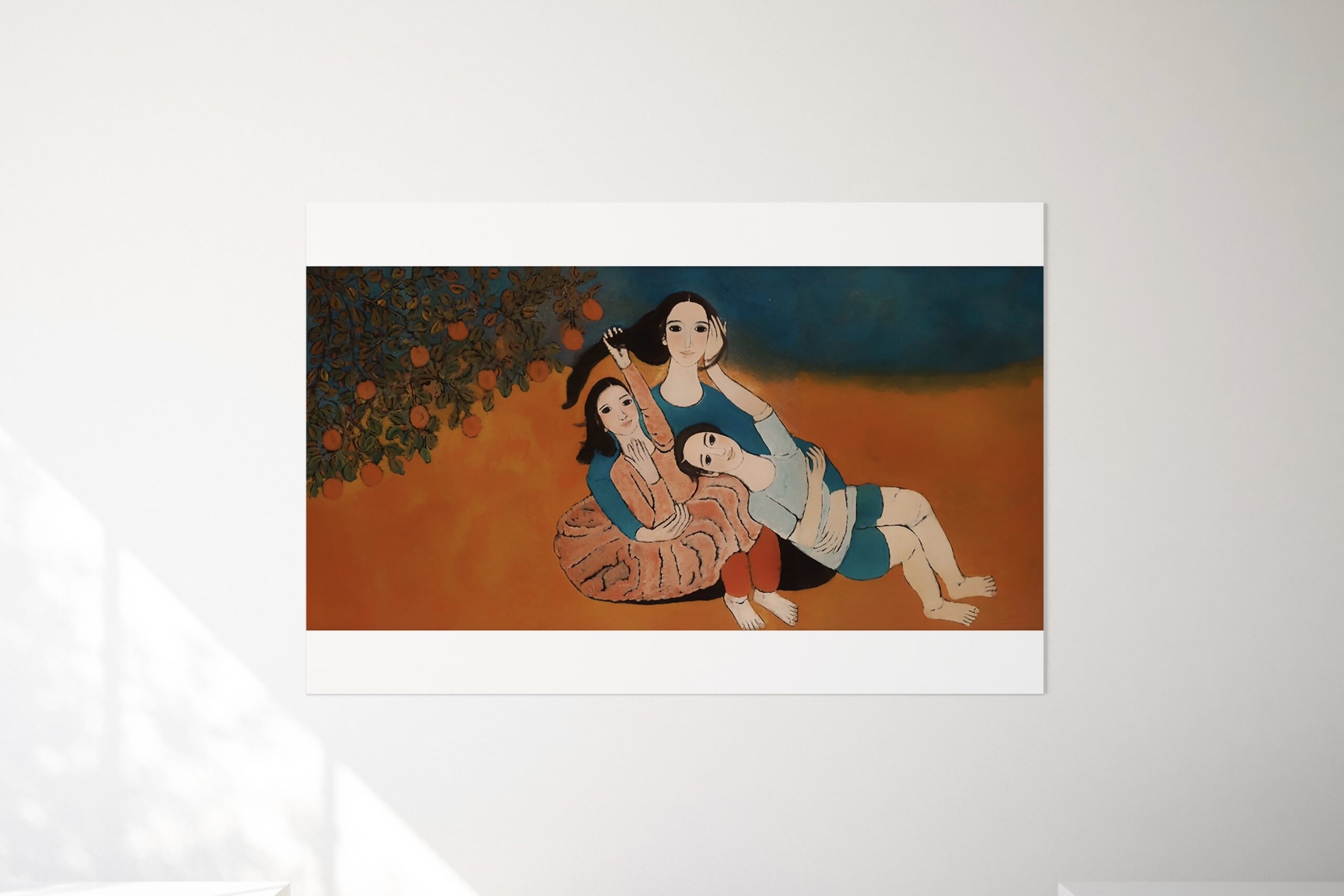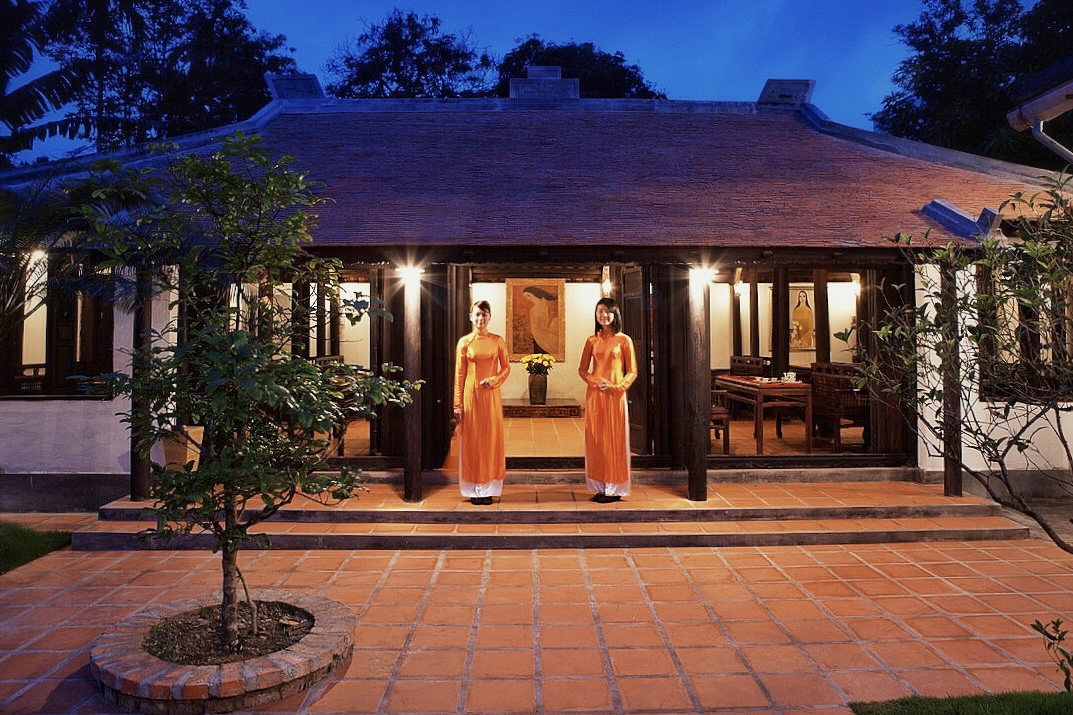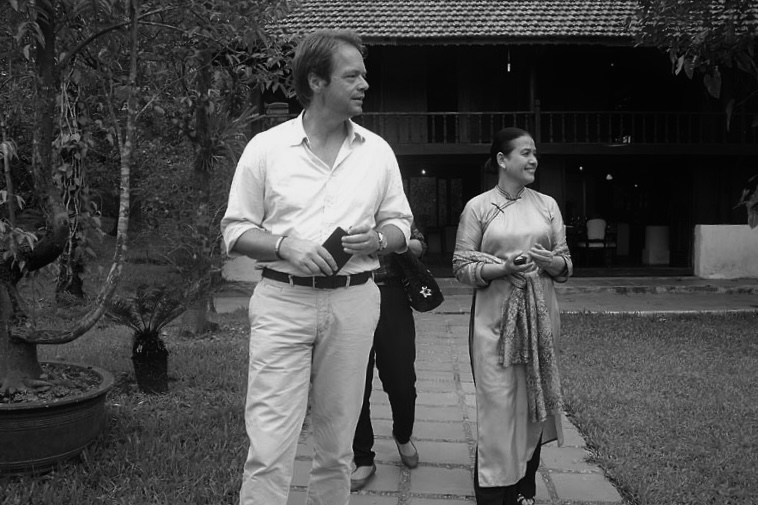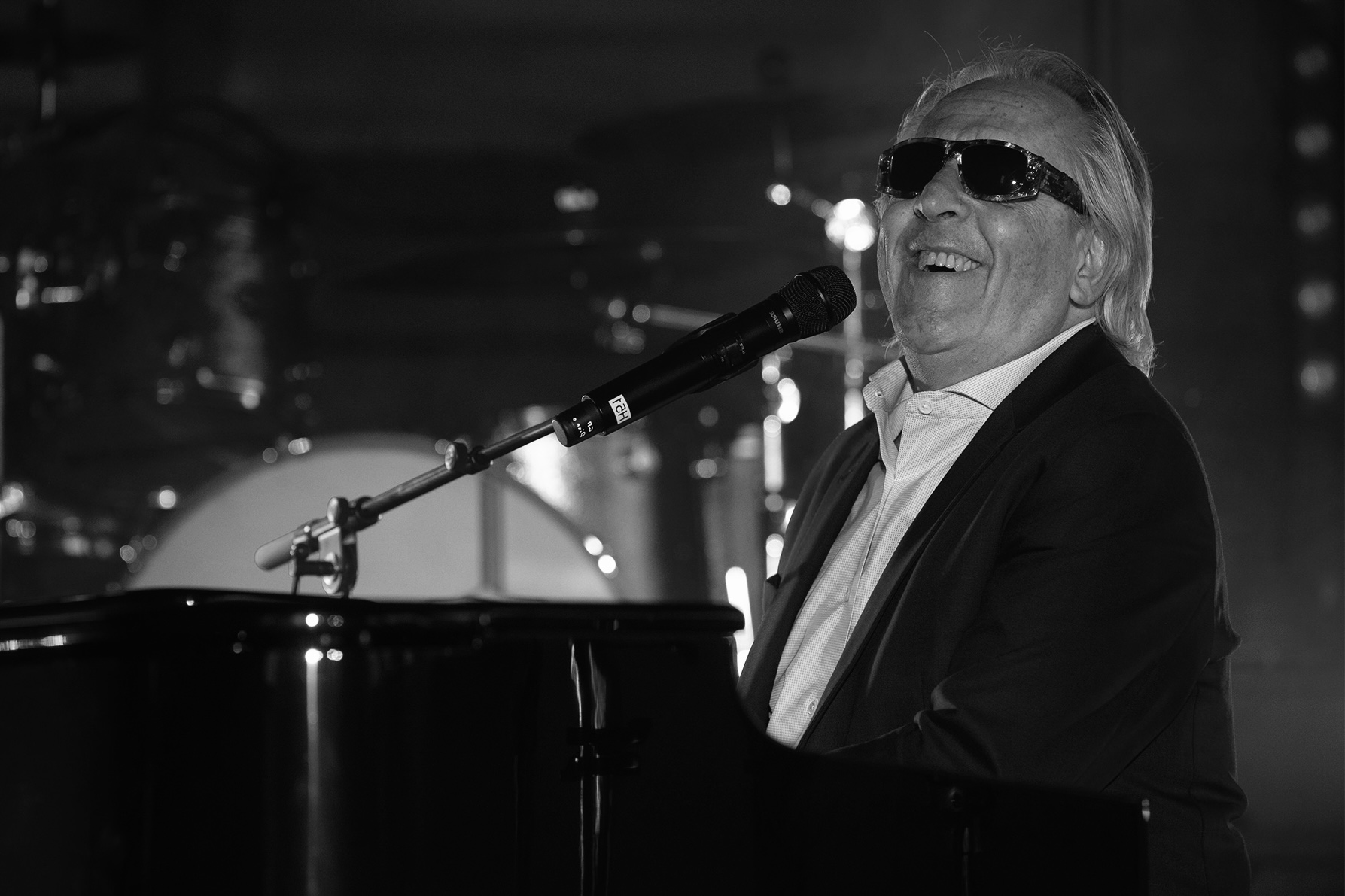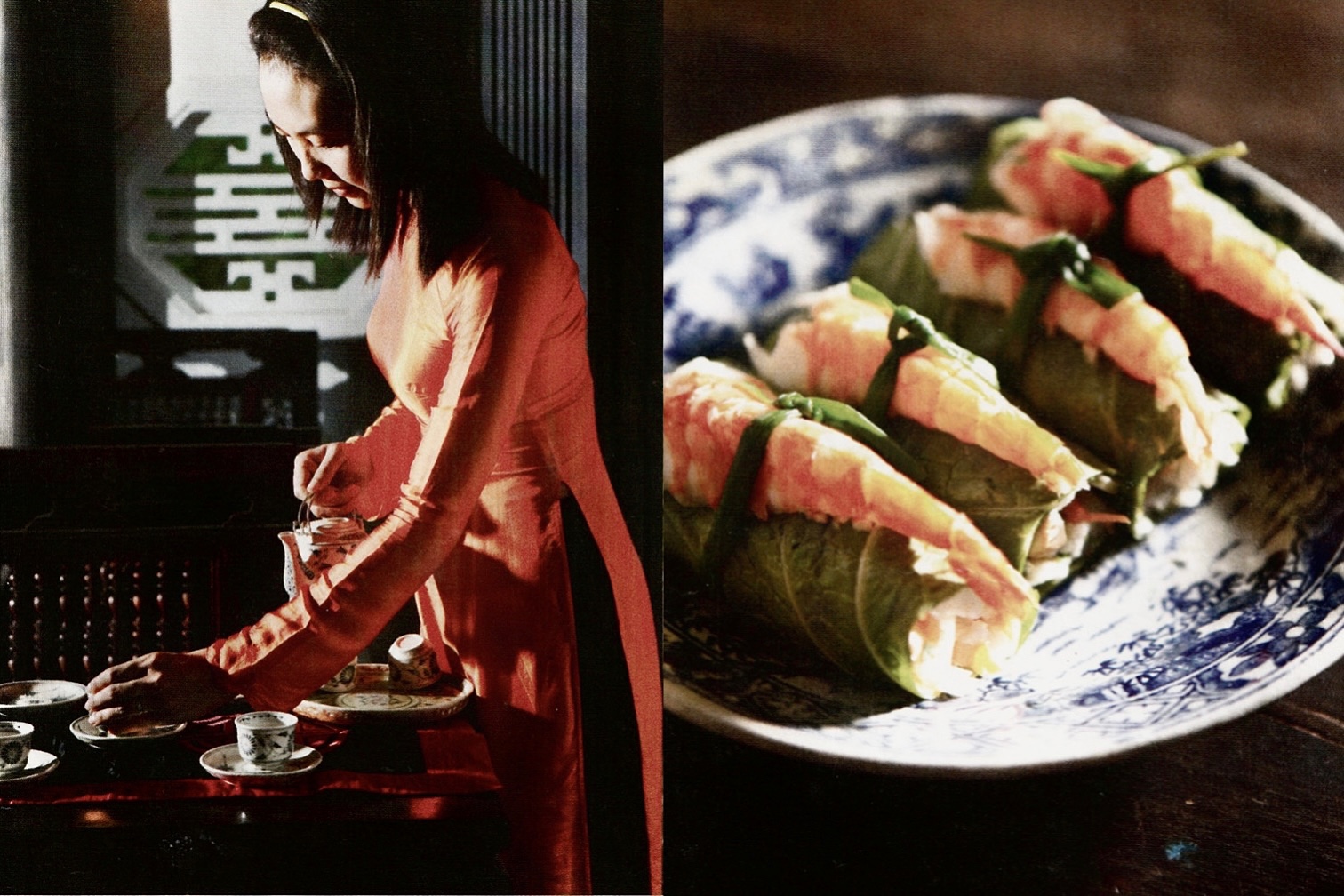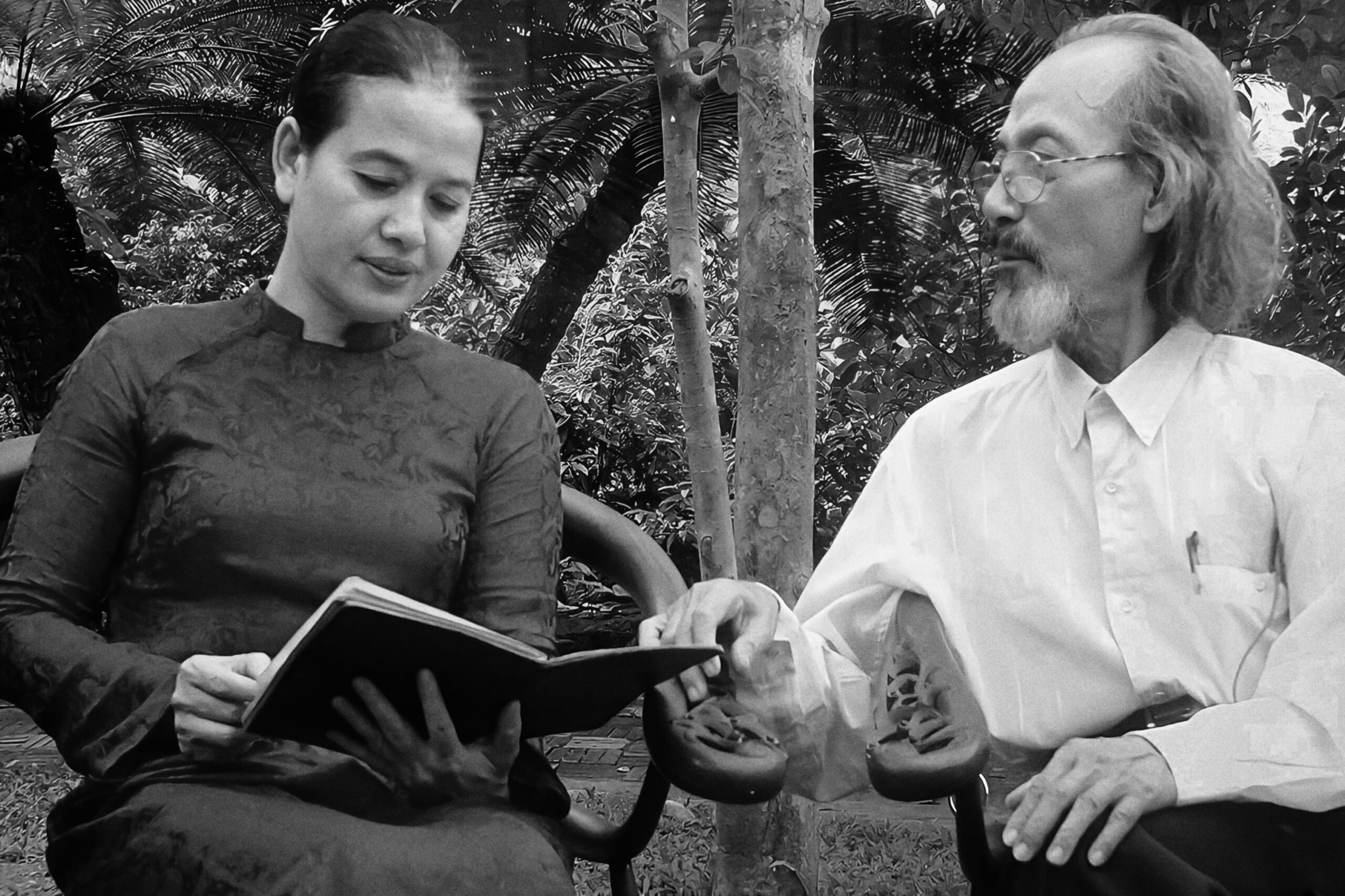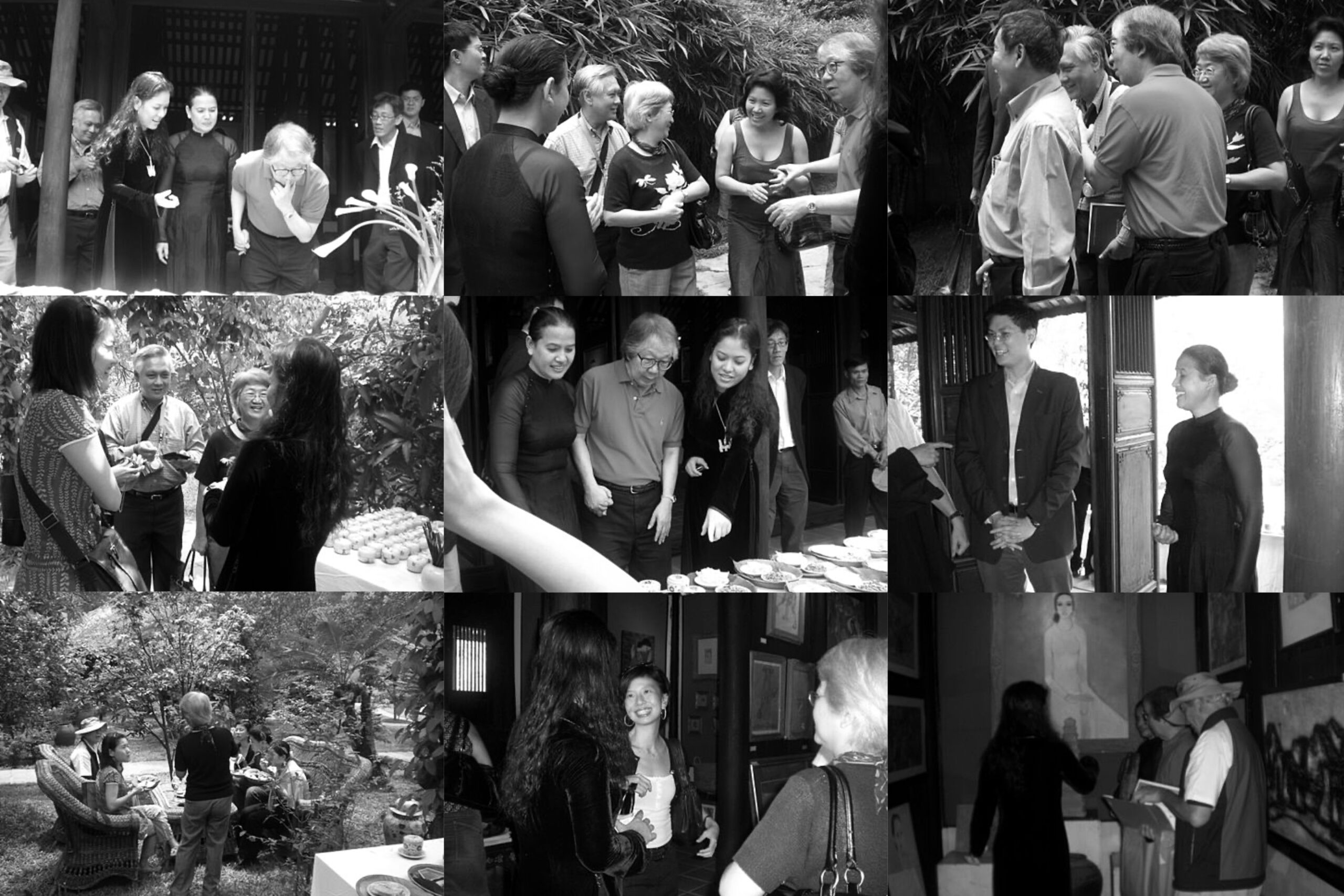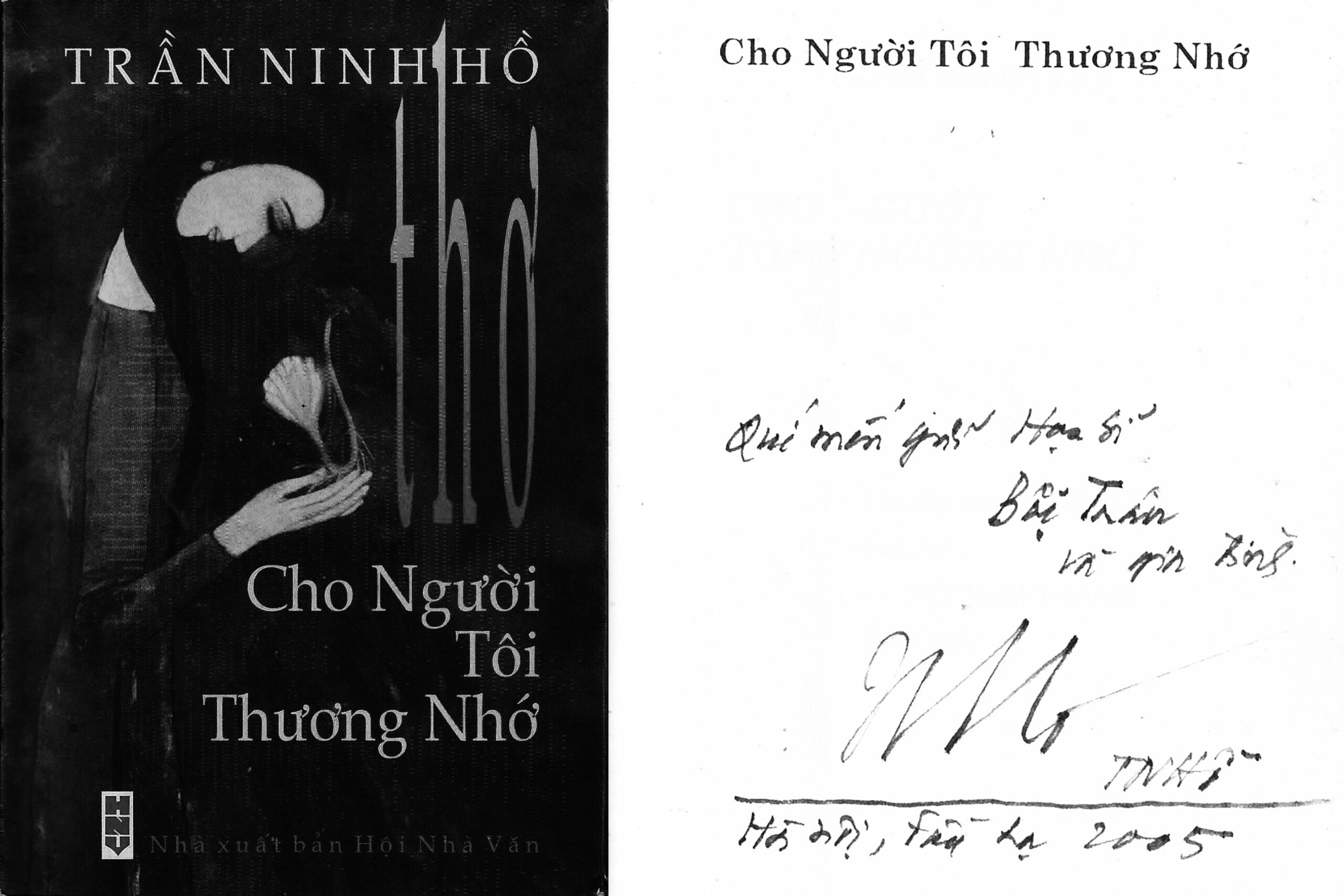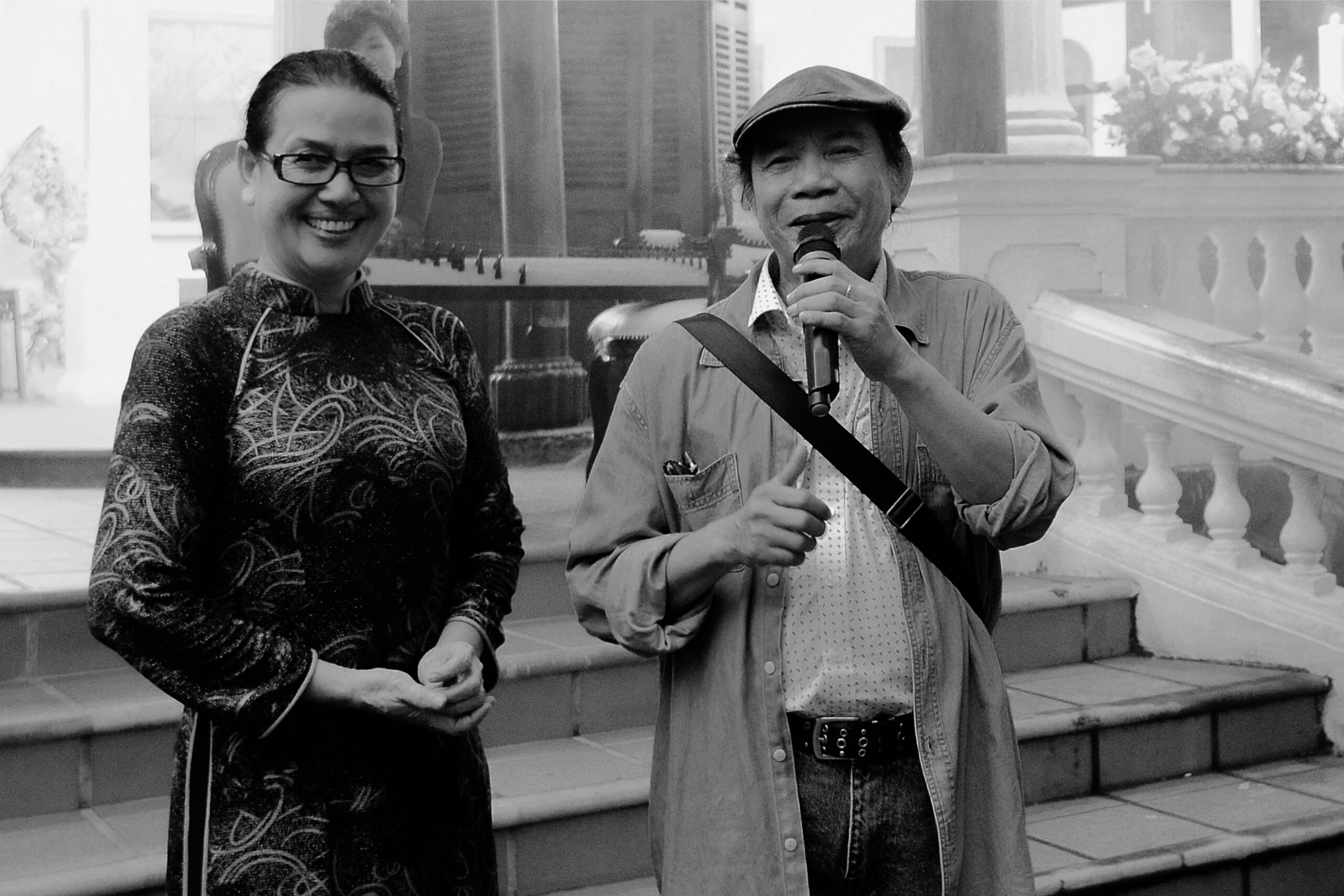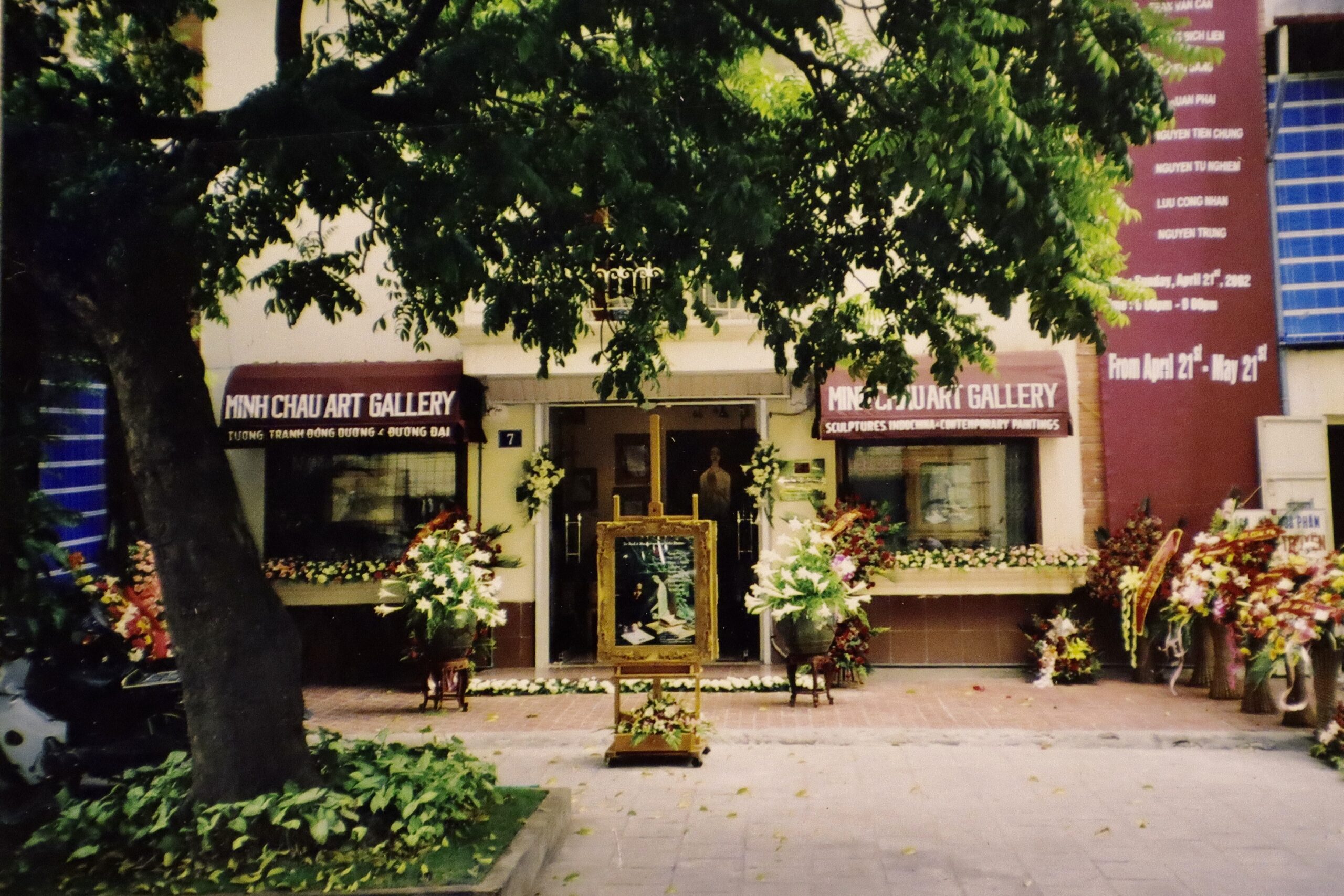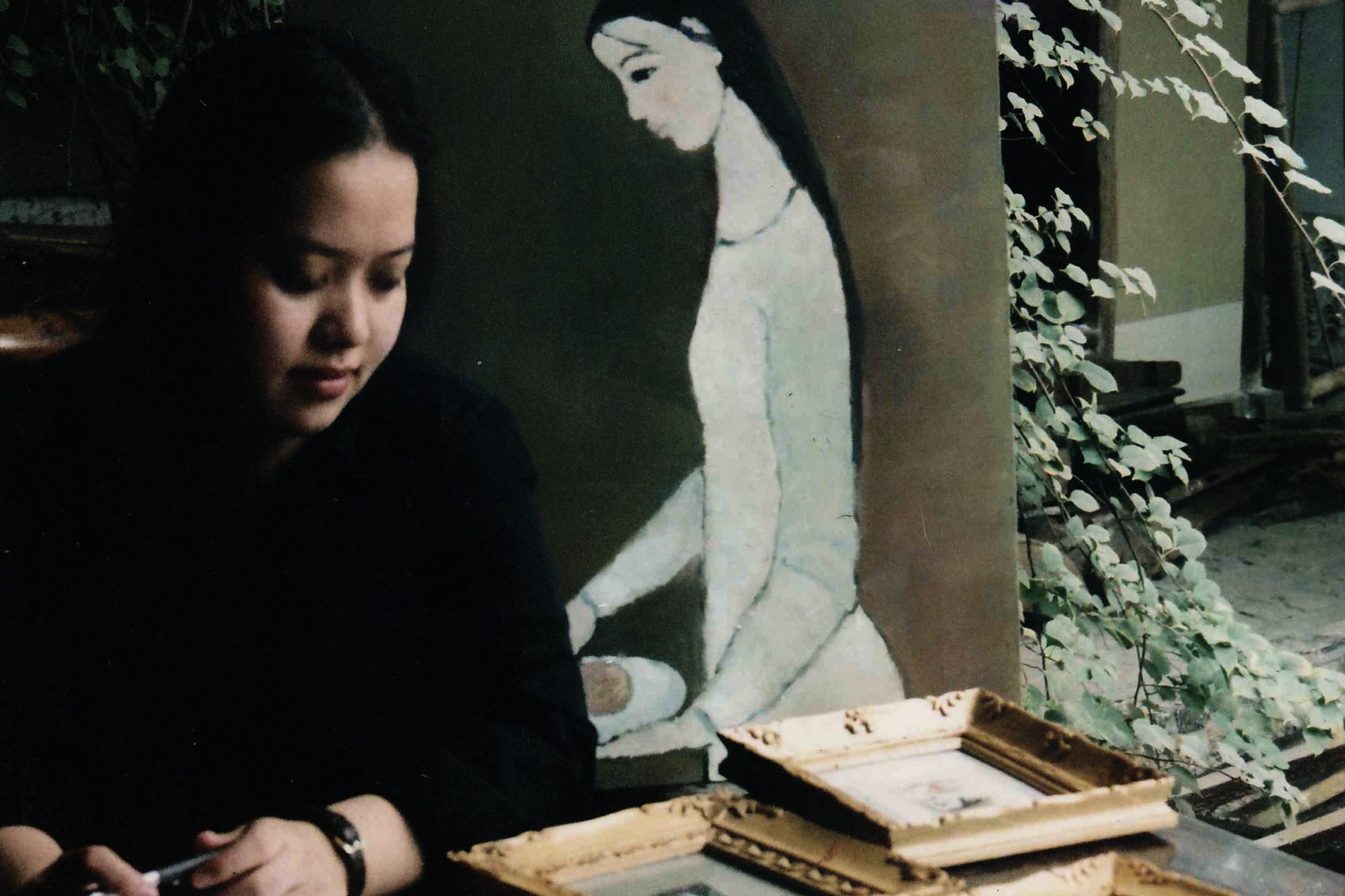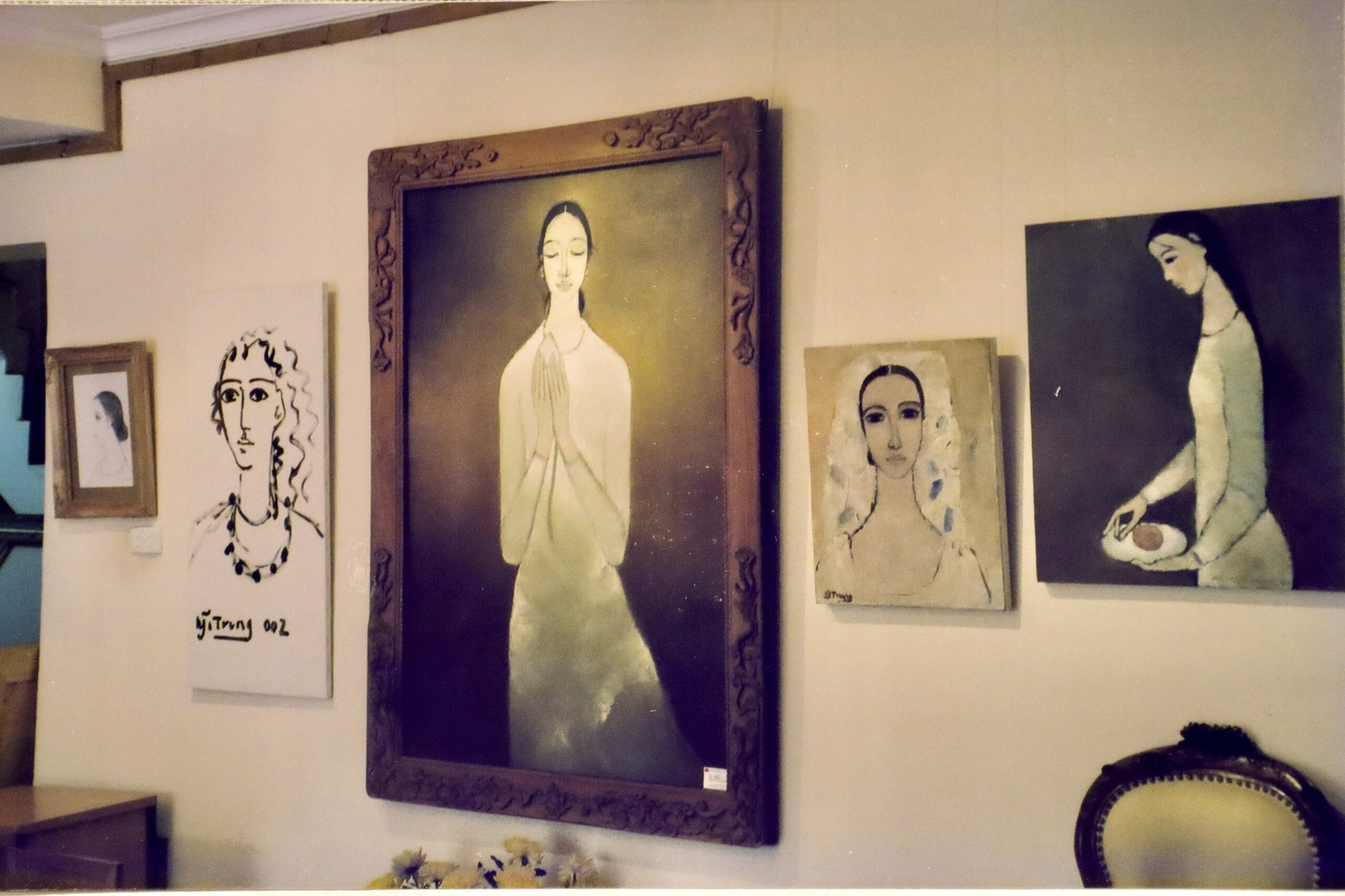Boi Tran: “Le Rêve Qui Veille” by Christie’s Senior Expert Jean-François Hubert
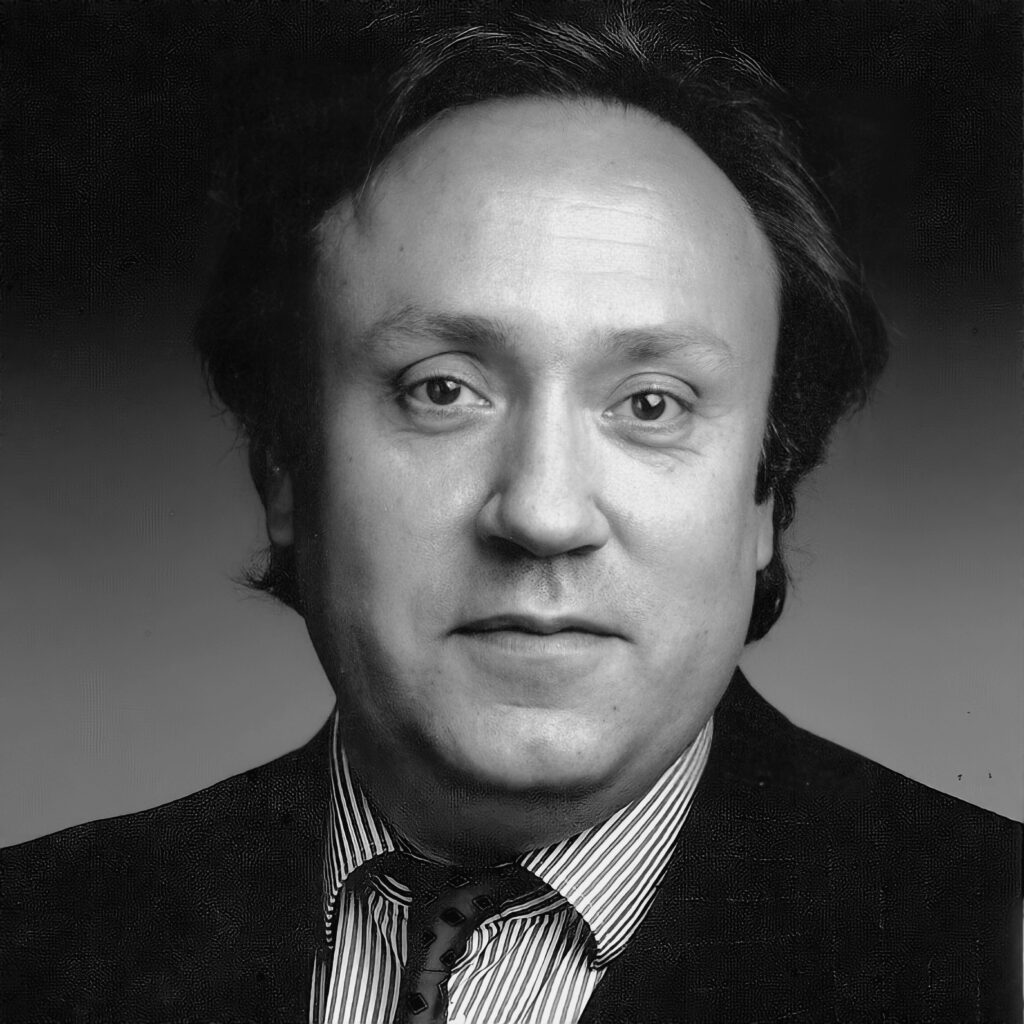
Christie’s Senior Expert, Vietnamese Art
Boi Tran knows that passion, this peppery spice of time, reveals the flavours of life but that the suffering which it engenders offers more slumber without night than nights without sleep. She lives and paints in her magic garden nestled on Thien An Hill in Hue, proud but comforting, where the wind frightens the centuries-old pine trees, and the bashful, even prudish, flowers triumph over the rain. A place where Time’s machine, this thief of joys, arrests itself… from time to time for the greatest happiness of the visitor.
There is no history without a place.
There are places without measure and histories beyond all time.
Elegant moments and secret places.
Patches of eternity and jolted thoughts.
To verify this, one must know Boi Tran.
BOI TRAN: “Le Rêve Qui Veille”
BỘI TRÂN: “VỪA MƠ VỪA MỞ MẮT”
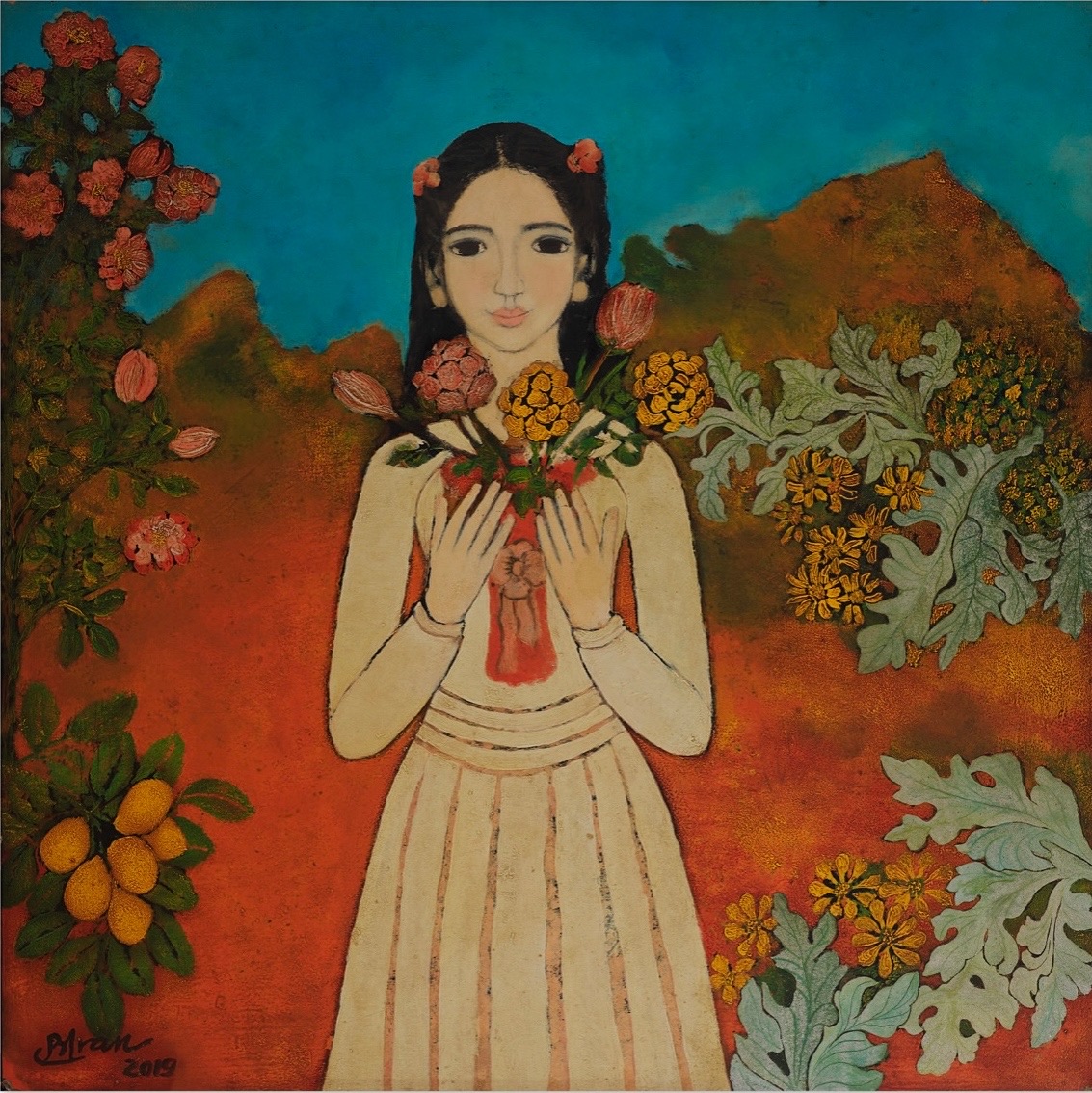
There is no place without a history.
There is no history without a place.
There are places without measure, and histories beyond all time.
Elegant moments and secret places.
Patches of eternity and jolted thoughts.
Chẳng có địa điểm nào không có lịch sử.
Chẳng có lịch sử nào không có địa điểm.
Có những địa điểm không đo đạc, những lịch sử ngoài vòng thời gian.
Những khoảnh khắc cao sang và những nơi chốn không ai biết.
Những mẩu thiên thu và những mơ màng ngắt quãng.
To verify this, one must know Boi Tran.
Muốn nghiệm lại mà xem, nên biết đến Bội Trân.
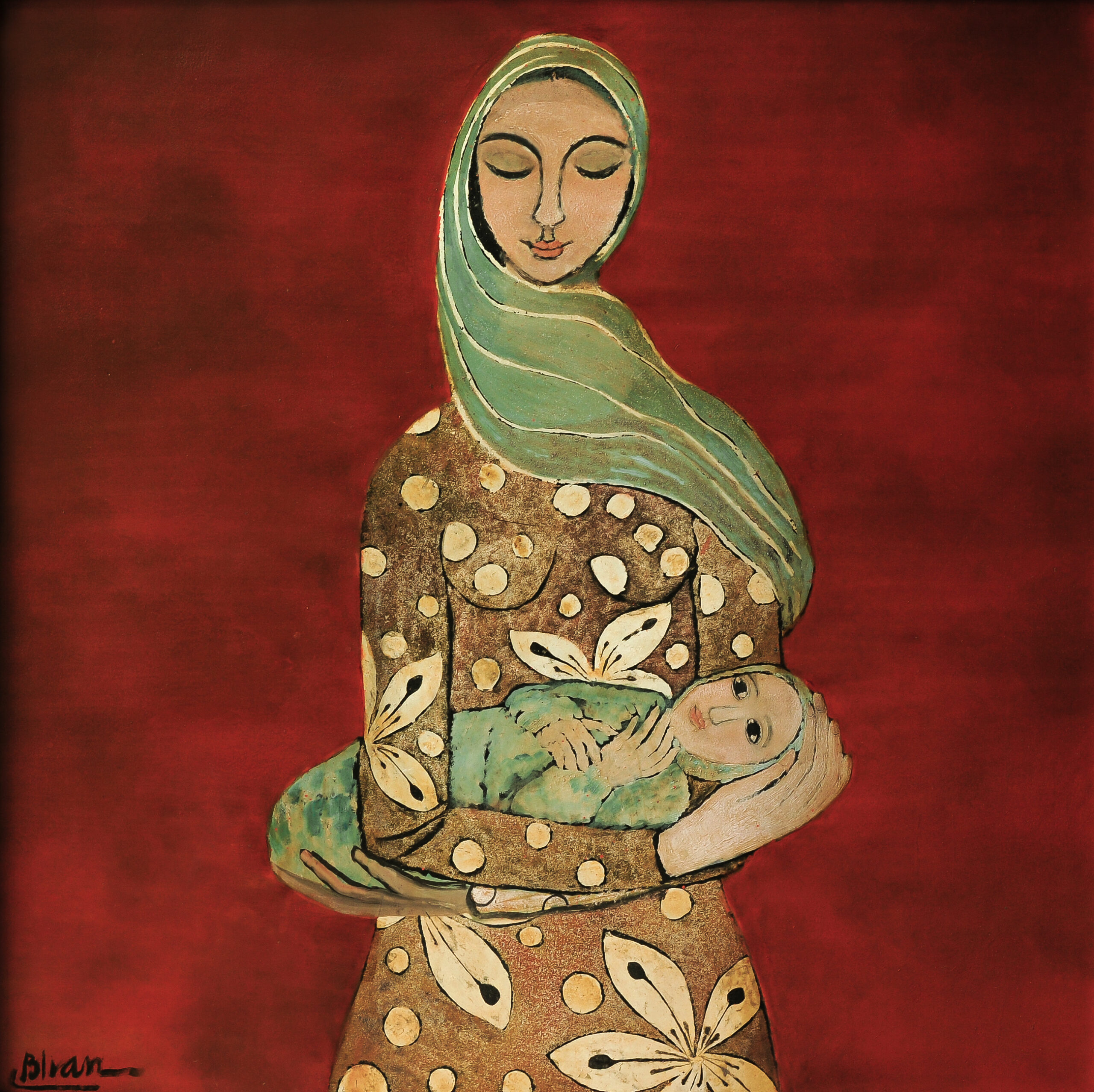
Is it for her that, in a prophetic karm, Ngo Chan Luu (933-1011) wrote:
Phải chăng là dành cho Bội Trân mà Ngô Chân Lưu (933 – 1011) từ một tiền kiếp nào đã hạ bút:
“Nothing begins, nothing ends
Only emptiness is absolute
The truth to comprehend
Is that all things are of the same nature.”?
There is no artist without Grace, no seismology without a volcano.
“Chẳng có gì khởi đầu, chẳng có gì kết thúc Chỉ có chân không là tuyệt đối
Chân lý cần nên hiểu
Rằng vạn sự đều như nhau.”?
Chẳng có nghệ sĩ nào không nhận được Ân Sủng, chẳng có địa chấn đồ nào không đi đôi với hỏa diệm sơn.
Boi Tran knows that passion, this peppery spice of time, reveals the flavours of life but that the suffering which it engenders offers more slumber without night than nights without sleep. She lives and paints in her magic Thien An garden in Hue, proud but comforting, where the wind frightens the centuries-old pine trees, and the bashful, even prudish, flowers triumph over the rain. A place where Time’s machine, this thief of joys, arrests itself… from time to time for the greatest happiness of the visitor.
Bội Trân biết rằng cái chất cay nồng của thời gian là đam mê ấy nó bộc lộ những mùi đời nhưng còn cái khốn đốn vì đam mê nó tác tạo những cơn ngủ không đêm hơn là đêm không ngủ. Người đẹp sống và vẽ tranh trong hiên viên mộng mị của mình vùng đồi Thiên An tại Huế, vùng đất kiêu hãnh mà vỗ về, nơi gió trời khiến rừng thông cổ thụ rùng mình, còn hạt mưa đang làm e lệ đến ỡm ờ bao nhiêu cánh hoa đắc chí. Một nơi cỗ máy thời gian vốn khiến ta mất vui nay cứ thỉnh thoảng hỏng hóc để chiều lòng du khách vãng lai.
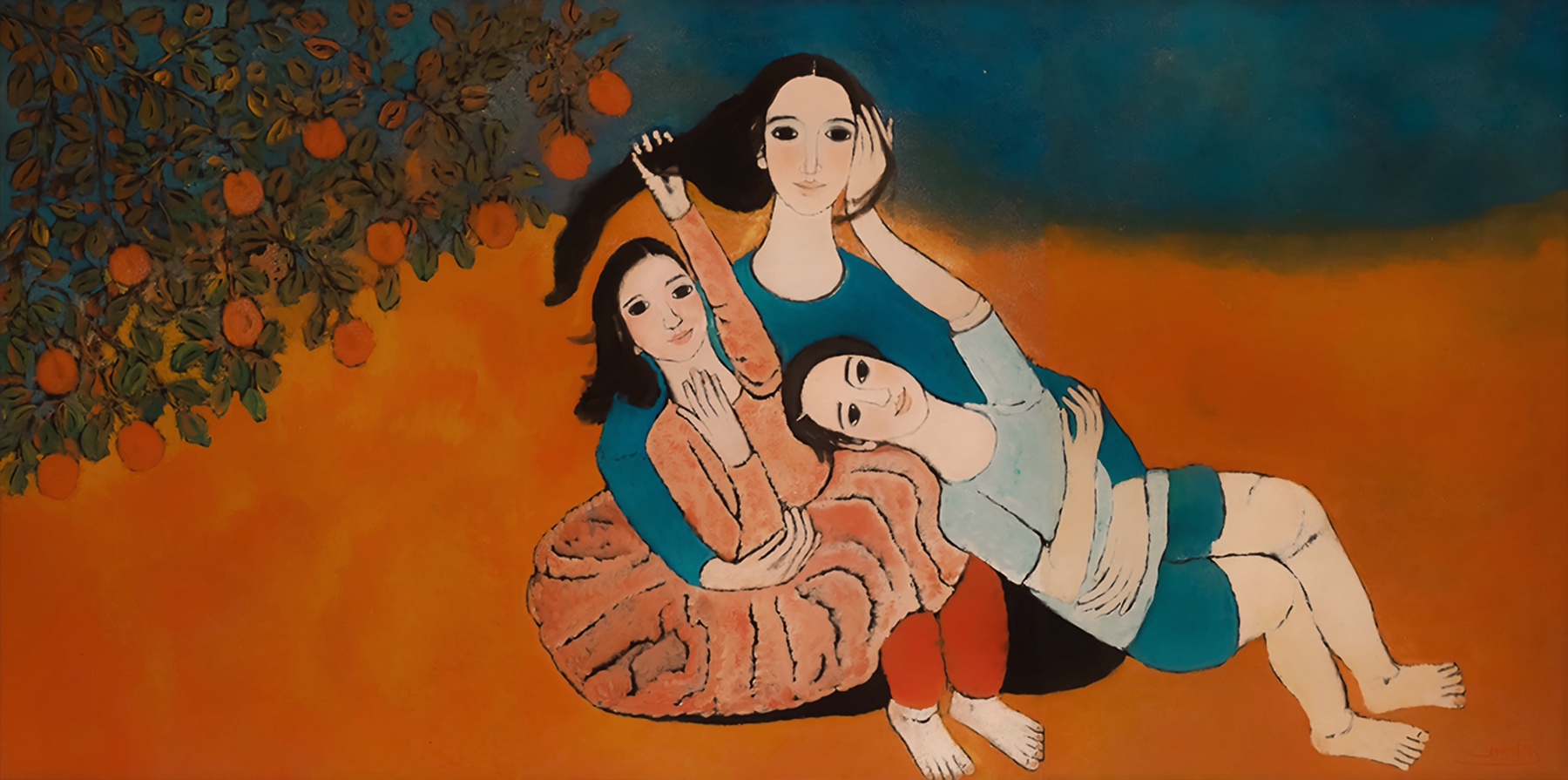
Dang Dung (who died in 1414) wrote it thus:
“The world is full of trouble, how can one age?
The infinite universe begins a drunken chant
With luck the humble and villain will rise up
In inimical times the hero drinks his bitterness.”
Đặng Dung (mất năm 1414) từng viết:
“Đời lắm nhiễu nhương, sống sao đến già? Trời đất vô lượng trong khúc hoan ca
Gặp may kẻ hèn kẻ hạ đắc thế
Anh hùng mạt vận đắng cay.”
The artist has no choice other than his work, but perhaps Boi Tran had even less choice than others. Less choice because war, loneliness and bereavement, all experienced by her to the utmost, have hollowed out her life: the artist, the true artist, is always a hero. Her fate belongs to her, but it unites the messengers of Liberty: “If you paint you die, if you do not paint you die, so paint and die.”
Nghệ sĩ chẳng có chọn lựa gì khác ngoài tác phẩm của mình, nhưng có lẽ Bội Trân lại còn ít được chọn lựa hơn mọi người khác. Ít được chọn lựa bởi lẽ chiến tranh, cô đơn, tang tóc vốn lên đến đỉnh điểm đã rắc rải từng chặng trong đời nàng: nghệ sĩ, người nghệ sĩ đích thực nào bao giờ cũng là một trang anh kiệt. Phương châm vốn của riêng mình nhưng làm thành tiếng nói chung cho các sứ giả của Tự Do, là: “Nếu ngươi vẽ thì ngươi chết, nếu ngươi không vẽ thì ngươi cũng chết, chi bằng vẽ mà chết.”
To be an artist is not a vocation, it is a requirement. The painter knows that only the future lasts: when Boi Tran paints she does not tell us what she knows, she shows us what she sees. The magic of an artist transforms us into a mirror image of ourselves.
Làm nghệ sĩ chẳng phải là một thiên chức, nhưng là một sự buộc mình. Họa sĩ biết rằng chẳng có gì trường cửu cho bằng tương lai: khi Bội Trân vẽ tranh, nàng chẳng nói với chúng ta những gì nàng biết, nàng phô bày những gì nàng thấy. Phép thuật của người nghệ sĩ biến chúng ta thành gương soi bản thân.
Nguyen Gia Thieu (1741-1798) wrote it thus:
“The bitter earthly taste benumbs our tongue,
The way of life wears out our shoeless feet.
On the tossing waves the pontoon rises and falls,
Boat-like foam battles the immense sea.”
Nguyễn Gia Thiều (1741 – 1798) có viết:
“Mùi tục lụy lưỡi lê tân khổ,
Đường thế đồ gót rổ khi khu.
Sóng cồn cửa bể nhấp nhô,
Chiếc thuyền bào ảnh lô xô gập ghềnh.”
There are only two kinds of artists, only two: those who want to change the world and those who ask it to accept them.
Có hai loại nghệ sĩ và chỉ hai mà thôi: loại muốn xoay chuyển cuộc đời và loại muốn đời chấp nhận họ.
Activism or passivity? Conquest or submission?
Chủ động hay thụ động? Chinh phục hay phục tùng?
Boi Tran has asked the world to accept her, but activism and conquest, passivity or submission, are not words that appear in her vocabulary.
Bội Trân muốn đời chấp nhận mình nhưng chủ động và chinh phục, thụ động hay phục tùng là những từ không thuộc ngôn ngữ của nàng.
Do you doubt this?
Bạn không tin ư?
Look at her from afar… proudly wearing her ao dai, offering to the proximate world the most beautiful smile on earth, one of those smiles that never disappears from your memory especially if it accompanied by a look so soft, full of questioning and goodwill, so noble and so simple at the same time. Looks that, at the time, give you the feeling that you are unique.
Bạn hãy nhìn nàng từ xa… kiêu sa trong chiếc áo dài, và trang tặng cho cuộc đời liền tay một nụ cười đẹp nhất, cái nụ cười mà thời gian sẽ không bao giờ xóa mờ trong ký ức của ta, nhất là khi nụ cười ấy đi đôi cùng một ánh mắt dịu dàng quá đỗi, ánh mắt tràn đầy hỏi han ưu ái, quá đỗi quý phái mà lại rất mực đơn sơ. Cái ánh mắt thuộc loại gây cho ta, lúc ấy, cái cảm tưởng như ta là duy nhất.
Boi Tran carries aloft the values of Vietnam.
Bội Trân là người vinh danh những giá trị của Việt Nam.
She knows, since her birth, that noise does little good and the good makes little noise. The noises of bombs, bullets, mines, are not an abstraction for her, a cinema project or a pretext to a musical accompaniment. Her body and her soul have survived all wars, just or unjust. Honesty and simplicity have triumphed over hatred and mistrust. Boi Tran’s paintings are suffused with a soft but wild energy. Her paintings are an ode to elegance and immanence.
Nàng biết, từ buổi chào đời, rằng sự rầm rộ chẳng hay ho gì mấy, và cái hay ho thì có gì rầm rộ đâu.
Cái rầm rộ của bom đạn, của mìn phá, không phải là một cái gì trừu tượng đối với nàng, không phải là một khuôn hình điện ảnh hay là một khúc dạo đầu cho một nhạc cảnh. Thể xác tâm hồn con người ấy đã kinh qua đủ cuộc chiến, cuộc chiến chính nghĩa hay phi nghĩa. Cái thiện lương và cái đơn giản đã vượt thắng hận thù, bỉ tiện. Bội Trân đặt vào tranh mình một nghị lực hiền hòa mà quyết liệt. Tranh của nàng là những bản tụng ca cái sang trọng và sung mãn nội tại.
Two great poets, dead too early, like her son Nghia, express it perfectly:
Hai nhà thơ lớn, qua đời quá sớm, như con trai Nghĩa của nữ họa sĩ, đã diễn đạt trọn vẹn điều vừa nói:
Han Mac Tu (1912-1940), who knew how to find the words that describe the concerns of the artist. Let us re-read it, in his search for words, battle companion of Boi Tran in the use of her paintbrush:
Hàn Mạc Tử (1912 – 1940) đã dùng được những lời nói lên cái thảng thốt của người nghệ sĩ. Ta hãy đọc lại nhà thơ đã dùng chữ nghĩa cũng như chiến hữu Bội Trân với cây cọ của mình:
“I wish that my soul could gush forth from the tip of my pen,
That some part of my brain could adhere to each verse.
The letters that swirl round like spurts of blood,
Blast me and ice my skin.
Let me faint in a bath of blood,
Express my pain on this thin page.
Do not stop the source of the poetry I embrace
Because my heart is in this sea of reeling letters.”
“Ta muốn hồn trào ra đầu ngọn bút, Mỗi lời thơ đều dính não cân ta.
Bao nét chữ quay cuồng trong máu vọt, Cho mê man chết điếng những làn da.
Cứ để ta ngất ngư trong vũng huyết,
Trải niềm đau trên mảnh giấy mong manh. Đừng nắm lại nguồn thơ ta đang siết,
Cả lòng ai trong mớ chữ rung rinh.”
Through the swishing of the paintbrush one feels the torments of the artist’s soul which, with a bit of everything, a nothing of ours, finds, pictorially, those so simple words which sound so beautiful, when one knows that, despite everything, nothing lasts other than the future.
Qua những tiếng rào rào của cây cọ, ta cảm nhận ra lòng người nghệ sĩ lao xao chỉ cần một phân ly gì đó của vạn vật, chỉ cần một bọt bèo của ta là đủ để tìm ra, qua nét vẽ, những từ ngữ mỏng mảnh âm vang sao mà đẹp đẽ thế, trong khi ta biết rằng, dù sao, có cái gì trường cửu như tương lai đâu.
Wait for the storm to pass or dance under the rain? This is the ultimate choice of the artist.
Chờ đợi cho bão qua đi hay là vũ lộng trong mưa? Đó là sự lựa chọn tối hậu của nghệ sĩ.
Bich Khe (1916-1946) has described it magnificently:
Bích Khê (1916 – 1946) đã miêu tả tràn trề:
“O wind, you breathe the sadness of the winter.
Space lets drop abundant tears,
The courtyard whitens with the first flowers of the pear tree,
The blue sky overflows with love for autumn,
Here are the heavy silvery clouds sliding to the west.”
“Gió ơi là gió buồn đông thổi về.
Không gian mưa lệ đầm đìa,
Đầy sân trắng toát hoa lê đầu mùa,
Trời lam ứ đặc tình thu,
Ô kìa mây bạc nặng lùa về tây.”
Adding, later:
“Suddenly a pair of blackbirds throw themselves into the sky…
Where does this sudden music come from
Which my soul follows, my soul.”
Và sau đó viết thêm:
“Chà đôi chim khướu nó bay tung trời…
Nhạc đâu bỗng vót từng khơi
Hồn theo với nhạc hồn ơi là hồn.”
To send a grief-laden letter? Is this our destiny because everything we love will die?
Gửi một lá thư tang? Cái số của ta nó thế hay sao, bởi mọi thứ ta yêu rồi sẽ chết?
Because life taught Boi Tran, a long time ago, that men without principles direct people with no memory, she proves, in her work, that if the dream does not dispel nightmares, it is time to despair of the dream.
Bởi vì đã từ lâu đời đã dạy cho Bội Trân rằng lớp người vô nguyên tắc cai quản những người không ký ức, cho nên chi qua tác phẩm của mình họa sĩ tỏ ra rằng nếu giấc mơ chẳng xua đuổi được ác mộng thì chẳng bỏ mơ làm gì.
There is always “The watchful dream” as written by Paul Eluard (1895-1952):
Vẫn luôn có “vừa mơ vừa mở mắt” như Paul Eluard (1895 – 1952) từng viết:
“Night is never total.
There is always because I say it,
Because I affirm it,
At the very depths of sorrow,
An open window,
A lighted window,
There is always a watchful dream (…)”.
“Đêm chẳng bao giờ trọn đêm
Tôi đã bảo mà, bao giờ cũng có,
Tôi đã nói chắc mà,
Phía cuối nỗi sầu,
Có cửa sổ mở,
Có cửa sổ sáng đèn,
Bao giờ cũng có vừa mơ vừa mở mắt (…)”.
Dear reader, go find and read the rest of the poem and ask yourself: Who has the right to speak of Boi Tran?
Hỡi bạn đọc, hãy tìm đọc tiếp bài thơ rồi tự hỏi: Ai có quyền nói về Bội Trân?
Dịch bởi Bửu Ý
